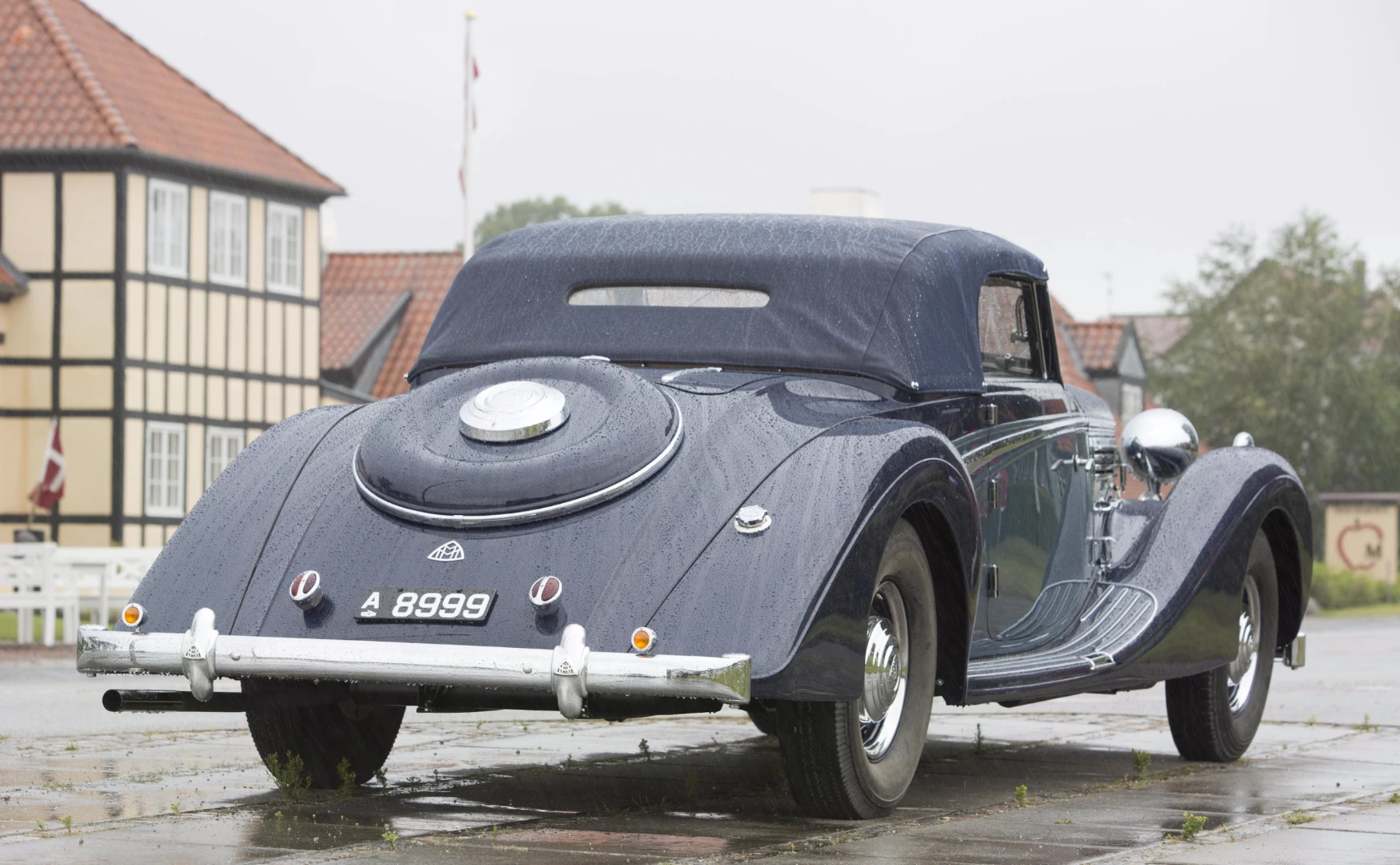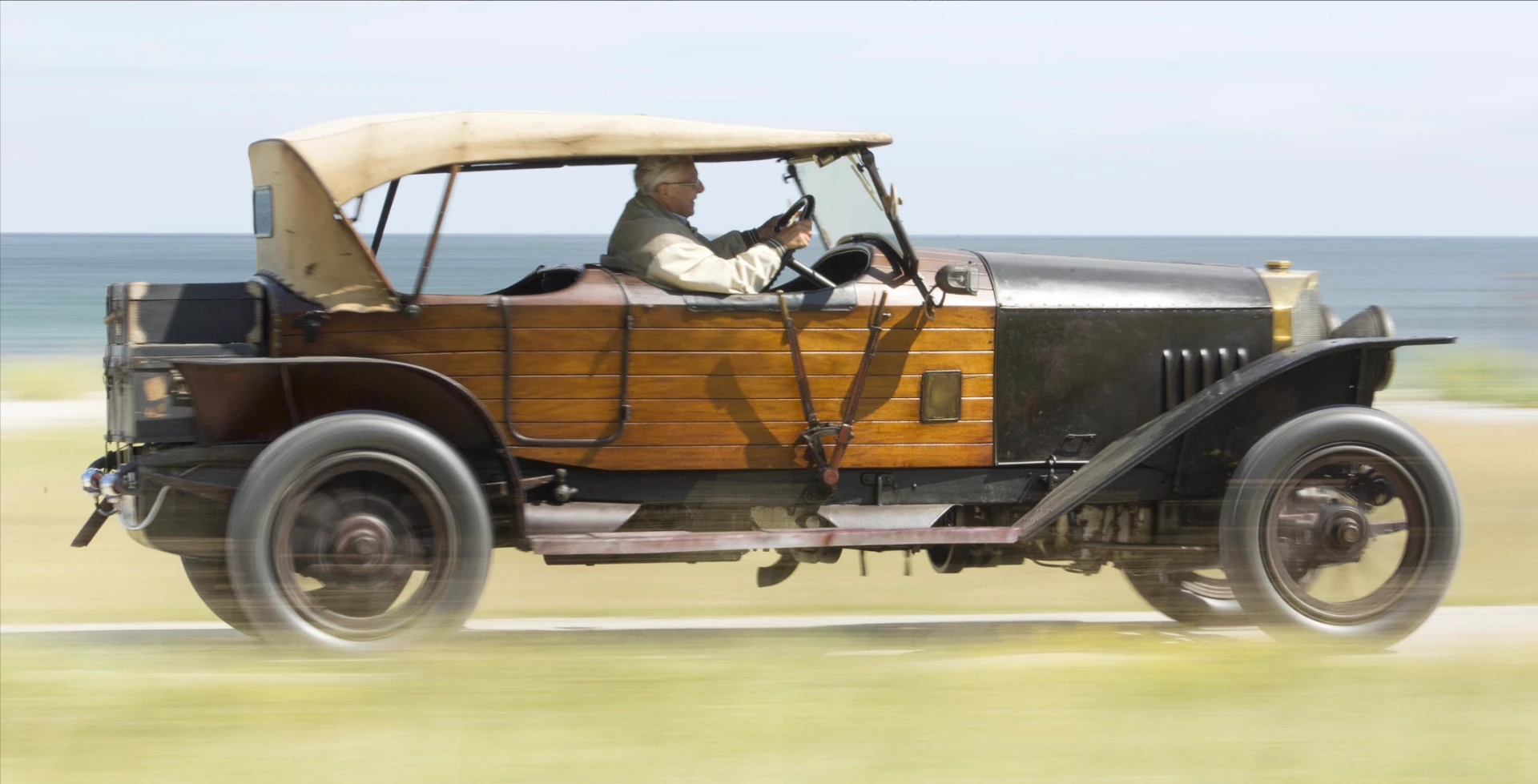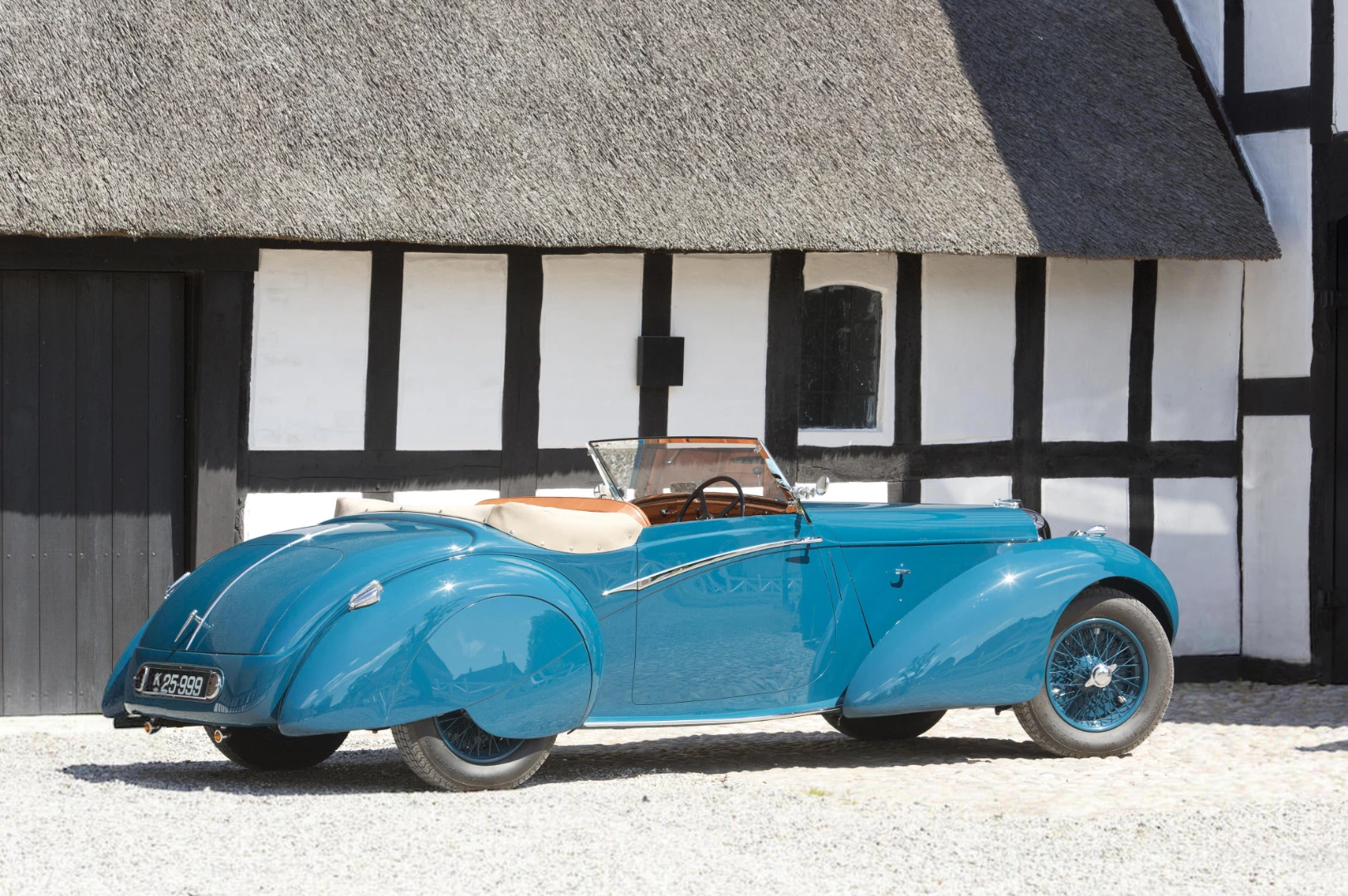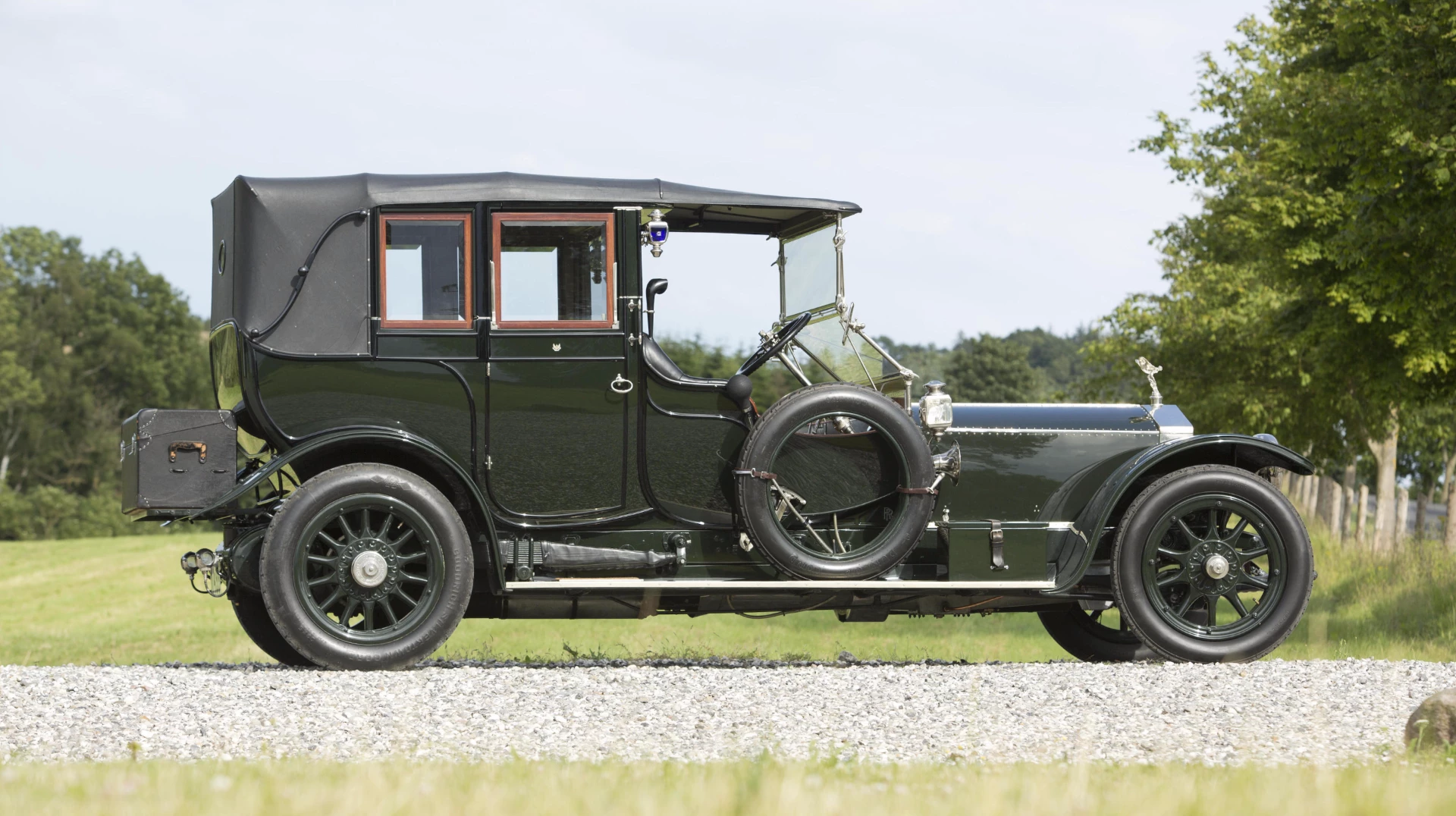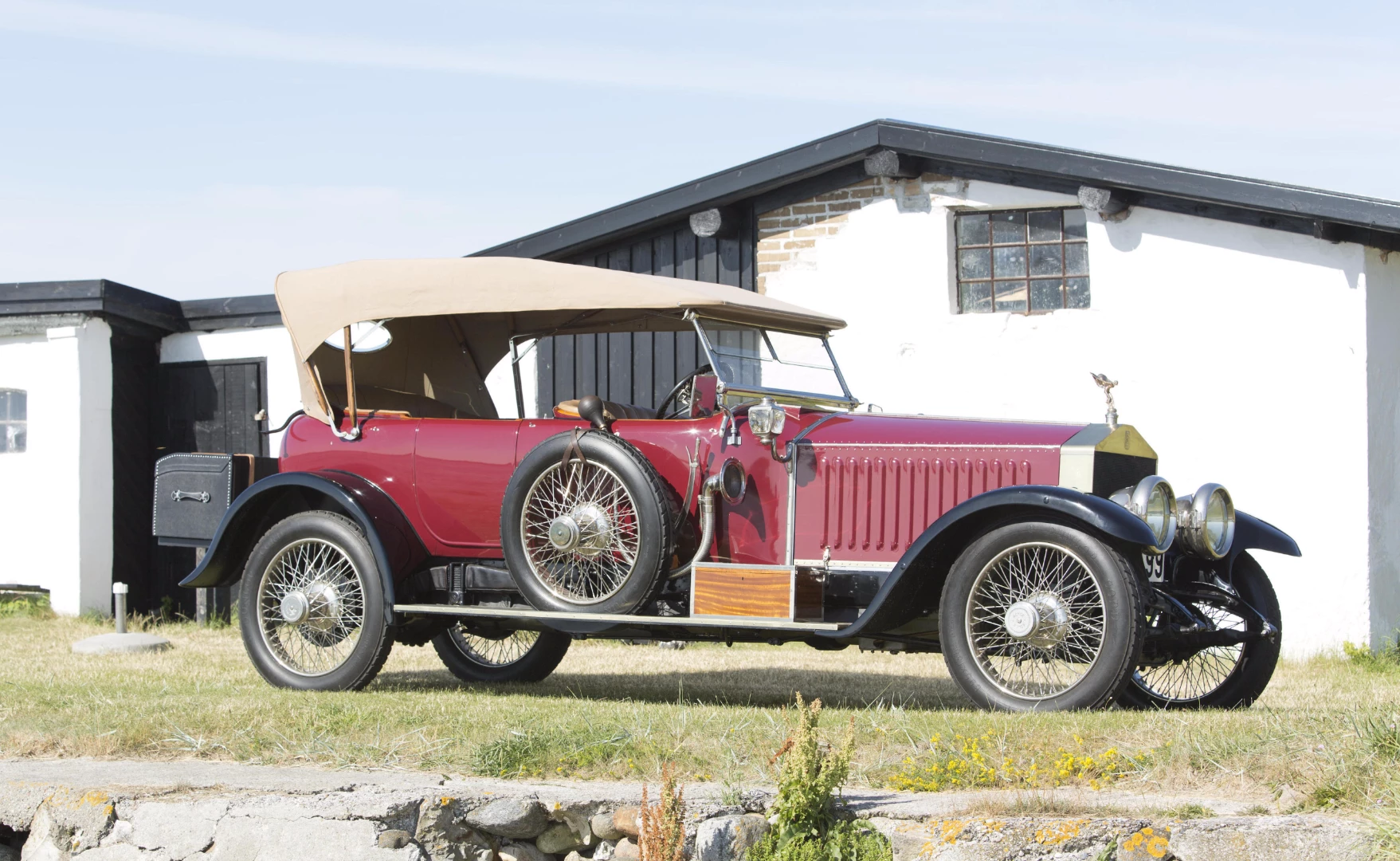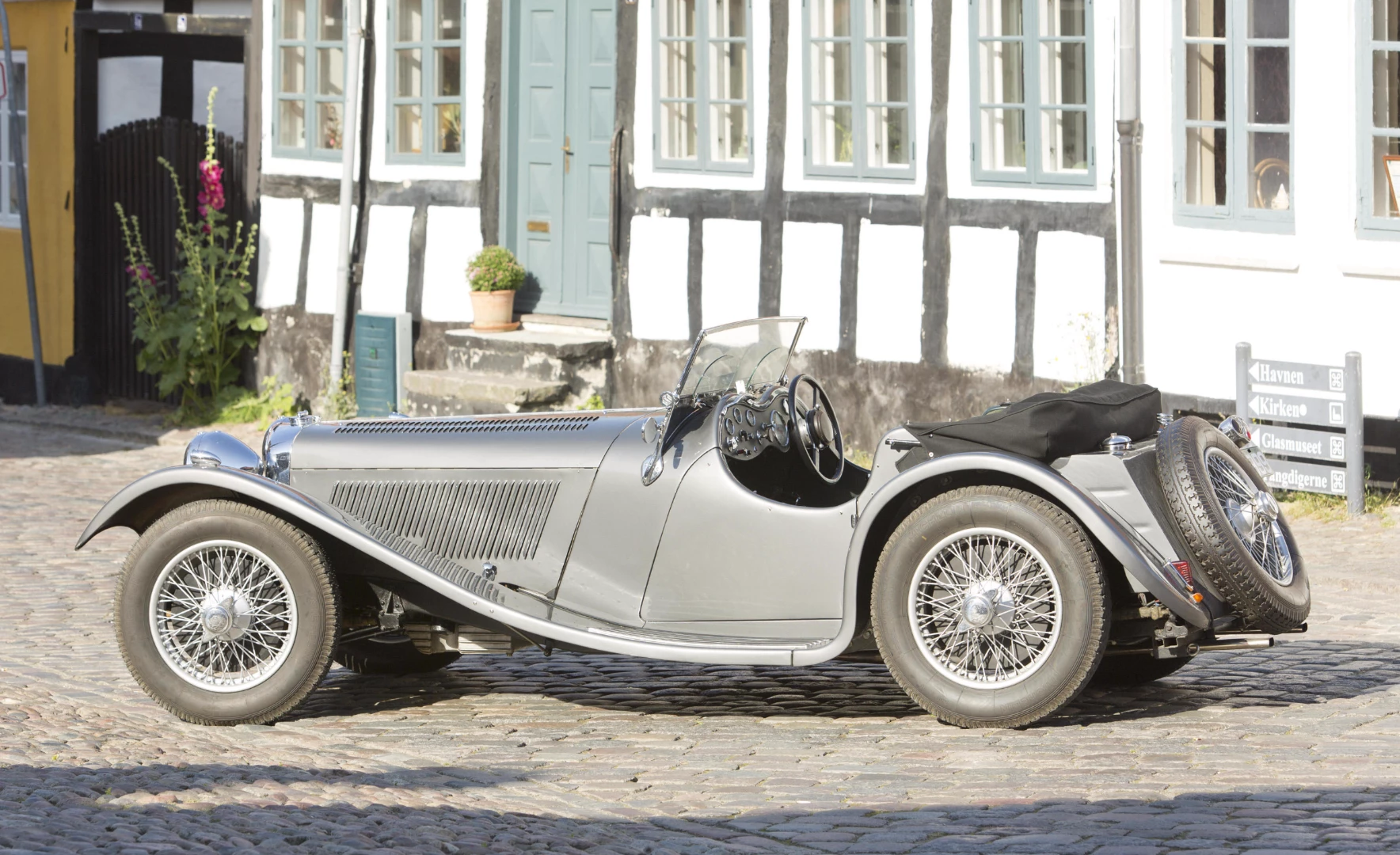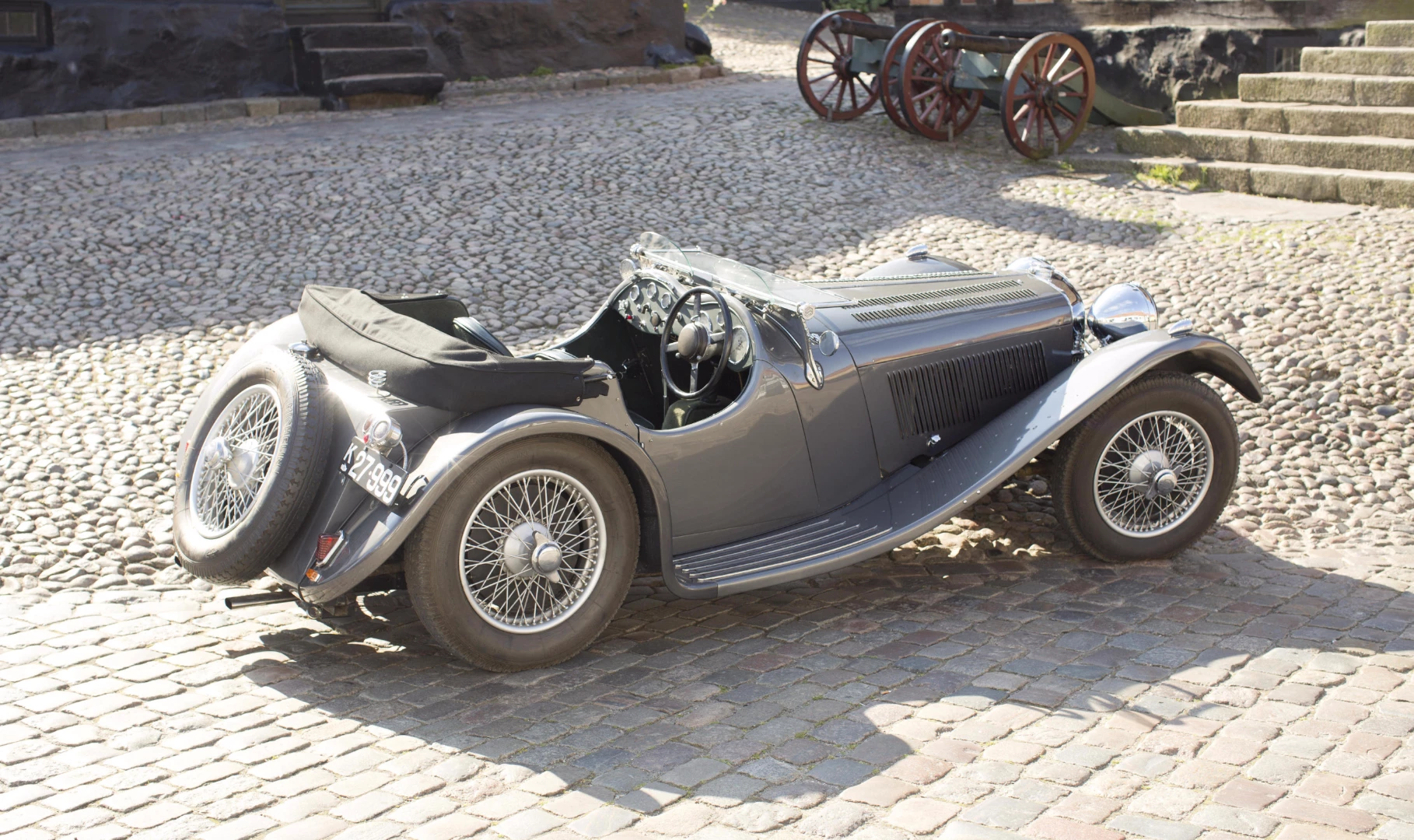Two auctions at the opposite ends of the world last weekend highlight the growing importance of the internet in the elite auction process. One auction was held at the 16th century manor house of Danish collector Mr. Henrik Frederiksen, where 48 of his highly prized motor cars went under the hammer, grossing DKK141,469,550 (US$21,229,881) with a 92 percent sell-through rate. The other was held in Auckland, New Zealand, with an equally impressive offering of classic motorcycles, but didn't have internet streaming or internet bidding, and grossed NZ$56,250 (US$35,909) with a 17.6 percent sell-through rate.
Now we know it's not fair to compare car and motorcycle prices, nor is it fair to compare New Zealand's major auction house (Webb's) with the one of the world's oldest and largest auction companies (Bonhams), but the comparison clearly illustrates that if you don't have full internet enabled participation (both viewing and bidding) from a world audience at the top end of the market, YOU ARE TOAST!
Bonhams has what we've often opined to be the best internet-based auction interface of all the elite auction houses, and it has helped the giant auction house become the world's number three collectible car auction house and number one collectible motorcycle auction house, plus a top three placing in many other key auction fields.
Using Bonhams' internet auction platform, it's possible to listen to and watch the current lot being sold while at the same time looking forward into the coming lots of the auction and looking back into the previous lots to see what was sold and how much it fetched. Of critical importance too, is that it is possible to bid on the auction using the same platform, and it's also possible to increase the size of the images to very high definition so you can see the ultra-fine detail of the lots – an imperative for an audience willing to pay an average $493,718 per car (the average lot price for the Aaaholm auction).
In just two decades, the internet has transformed almost every industry and the auction industry is currently undergoing that transformation. With a global audience now connected and available, it is now vitally important to enroll and engage that audience with a full suite of compelling technologies.
That said, here's our pick of what did and didn't sell in Denmark and New Zealand.
1930 Duesenberg Model J 'Disappearing Top'
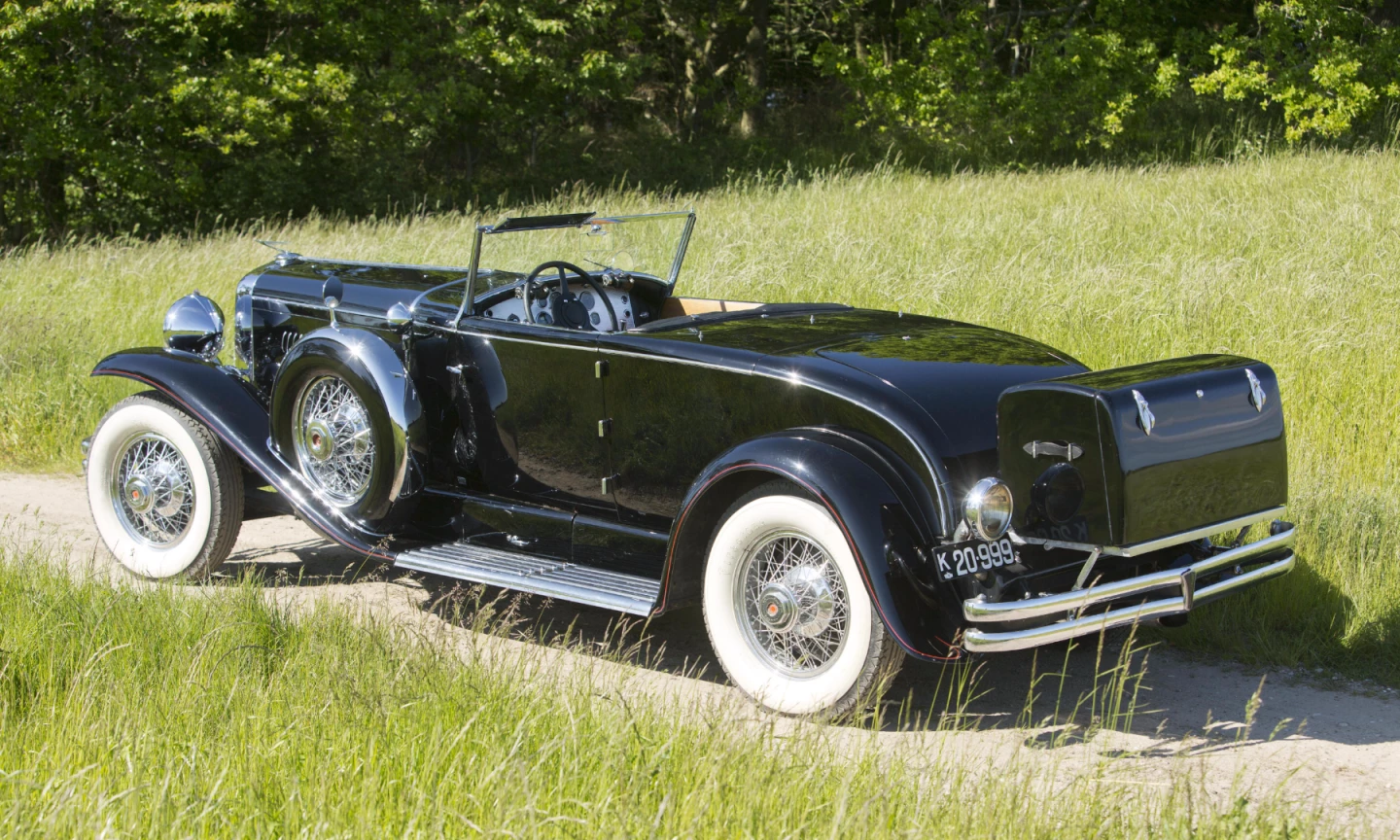
Sold for DKK17,825,000 ($2,674,941)
Lot 14, this impeccably credential Duesenberg Model J with Murphy "disappearing top" coachwork, was the logical top seller of the Frederiksen Collection and it delivered with a final price of DKK17,825,000.
Purchased new by prominent American photographer Shirley Carter Burden (Great Grandson of C. Cornelius Vanderbilt), it's provenance is highly detailed (the car was sold with an extensive history file) for its entire 85 year existence, and it has Category 1 Auburn Cord Duesenberg (ACD) club certification. The car was eventually hammered down to a U.S. telephone bidder for DKK 17,825,000 (US$2,674,941).
1914 Mercedes 28/95 Phaeton
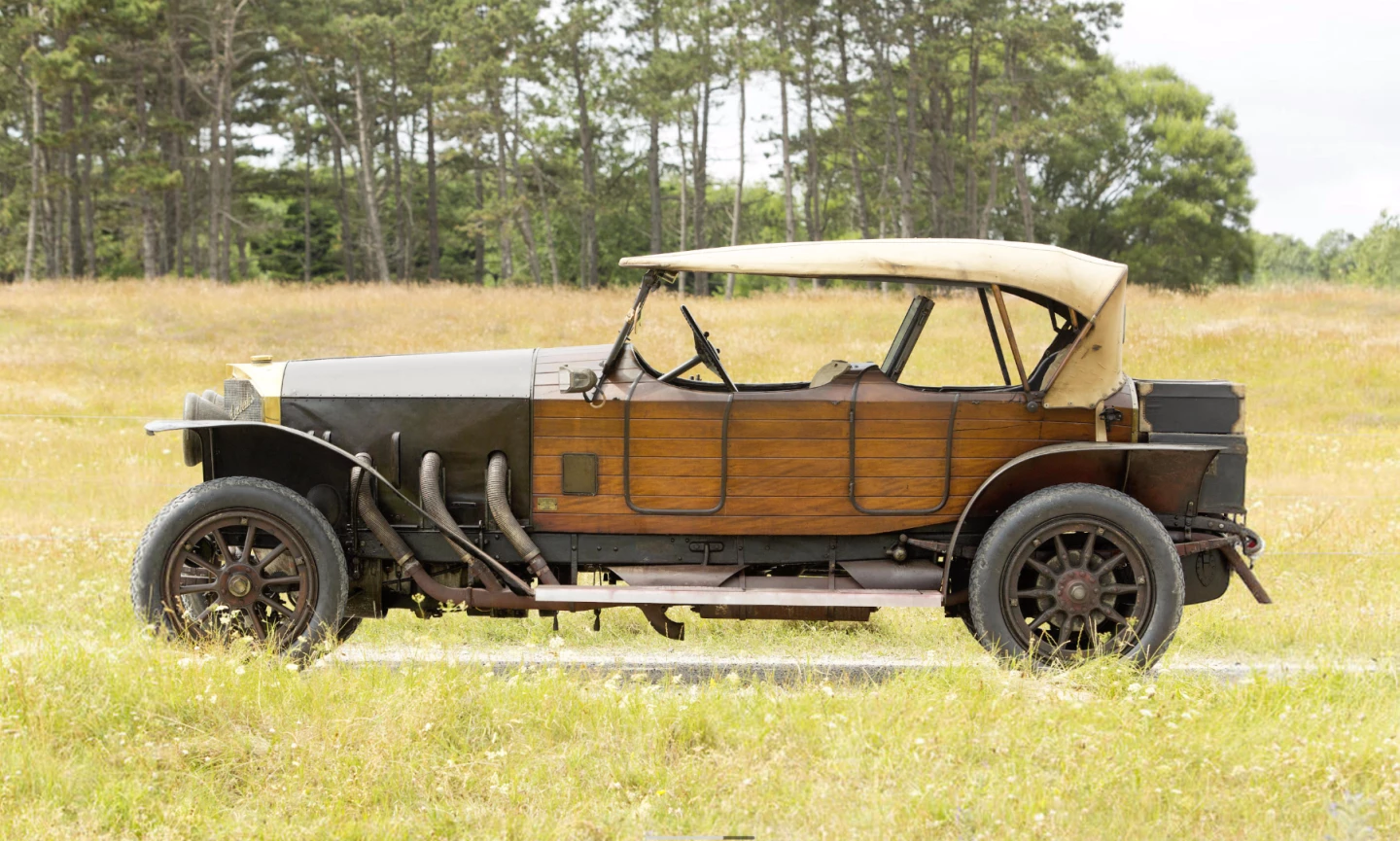
Sold for DKK9,372,500 ($1,406,501)
Mercedes-Benz didn't exist before 1926 when Benz & Cie. (begun by Karl Benz in 1883 and the company that created the world's first petrol-engined automobile) and Daimler-Motoren-Gesellschaft (1890-1926) were amalgamated, but both halves of the partnership bringing with them a glorious history even at that early stage.
This car comes from the Daimler-Motoren-Gesellschaft (DMG) side of the family, and is unquestionably a very significant car in DMG history. It bears the plaque of C.L. Charley, (the French, Belgian and American DMG distributor from 1907 to 1910) which dates the body from a period prior to the car's manufacture, and also means it was quite possibly built by the legendary Jacques Saoutchik, who frequently did work for C.L. Charley before incorporating his own company and going on to worldwide recognition for his flamboyant coachwork. The full history of the vehicle can be found in the official auction description, and justifies the price of DKK9,372,500 ($1,406,501) paid by a German telephone bidder.
1935 Mercedes-Benz 500K "Special Roadster"
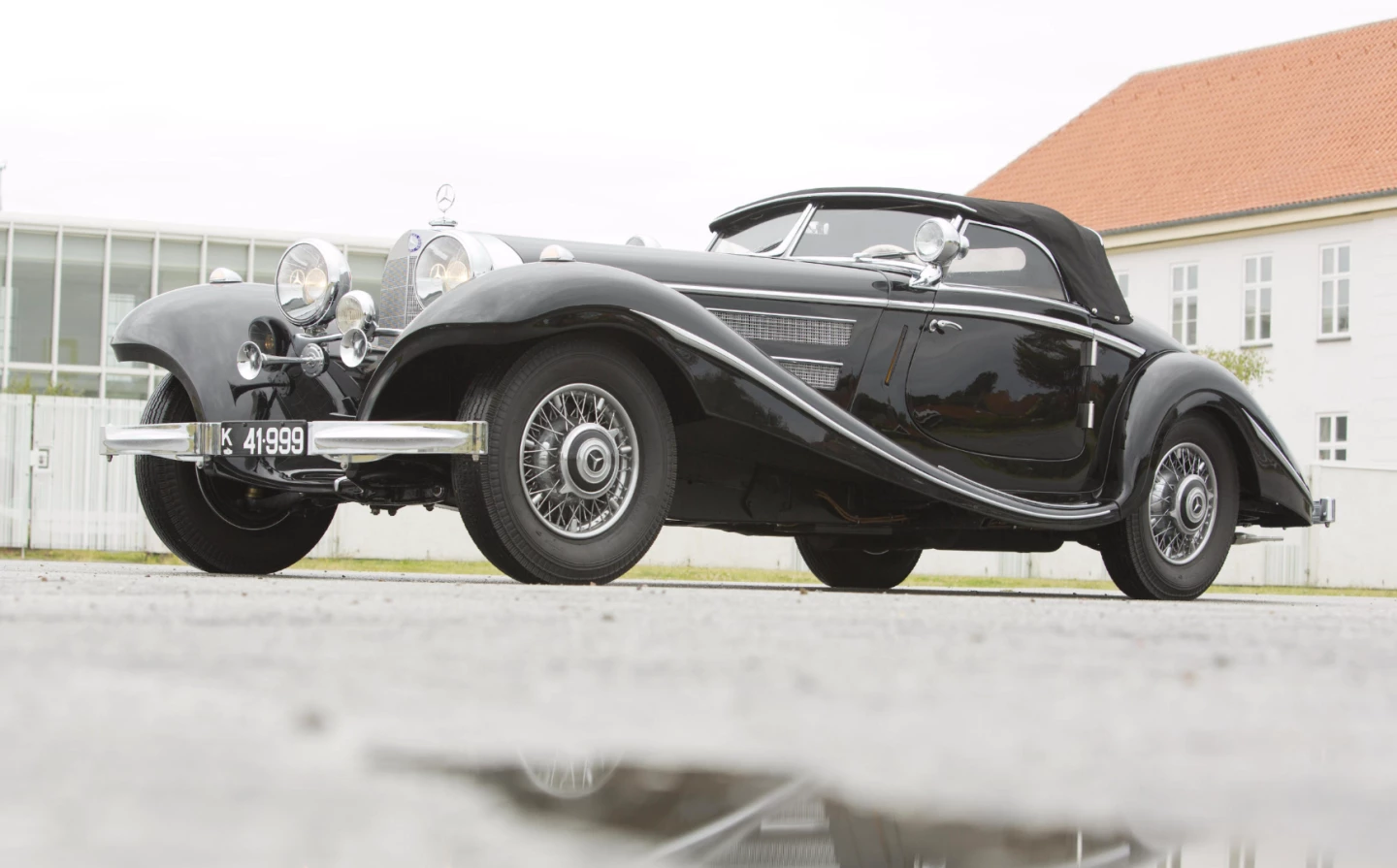
Sold for DKK7,590,000 ($1,139,007)
We've previously discussed the rise of the "replicar" 500K and 540K Spezial Roadsters and the difference in value such cars have to the originals built by Mercedes in Sindelfingen. Like the Nawrocki-built 540K from the above article, this car is another atom-perfect replica built by a craftsman of renown – Franz Prahl of Lübbecke, Germany.
Prahl originally began restoring Iso Grifo and Bizzarrini cars in the early 1990s, before beginning work on recreating and restoring Mercedes-Benz Special Roadsters around 15 years ago. In 2002, he began using the annual Technoclassica Show in Essen, Germany as a showcase for his work, which often took several years per car to complete. One year the visitors at Technoclassica could admire the wooden frame, the next year a car's perfectly recreated brushed metal skin would be shown on the frame, and the next year, the perfect completed car would be on the stand.
Only 29 Special Roadsters were built on either the 500K or 540K chassis and they are so magnificent and rare that they now sell in the $10 million range, so replicas are being built using the similar factory Cabriolet A, B, C and D models as a base (they shared many components with the "spezial roadster").
The chassis of this car was originally delivered as a 500K Cabriolet C on 12 November 1935 and underwent a Prahl metamorphosis between 2008 and 2011. Henrik Frederiksen acquired the car in the fall of that year. Full story on the auction page.
1914 Rolls-Royce 40/50 Silver Ghost Skiff
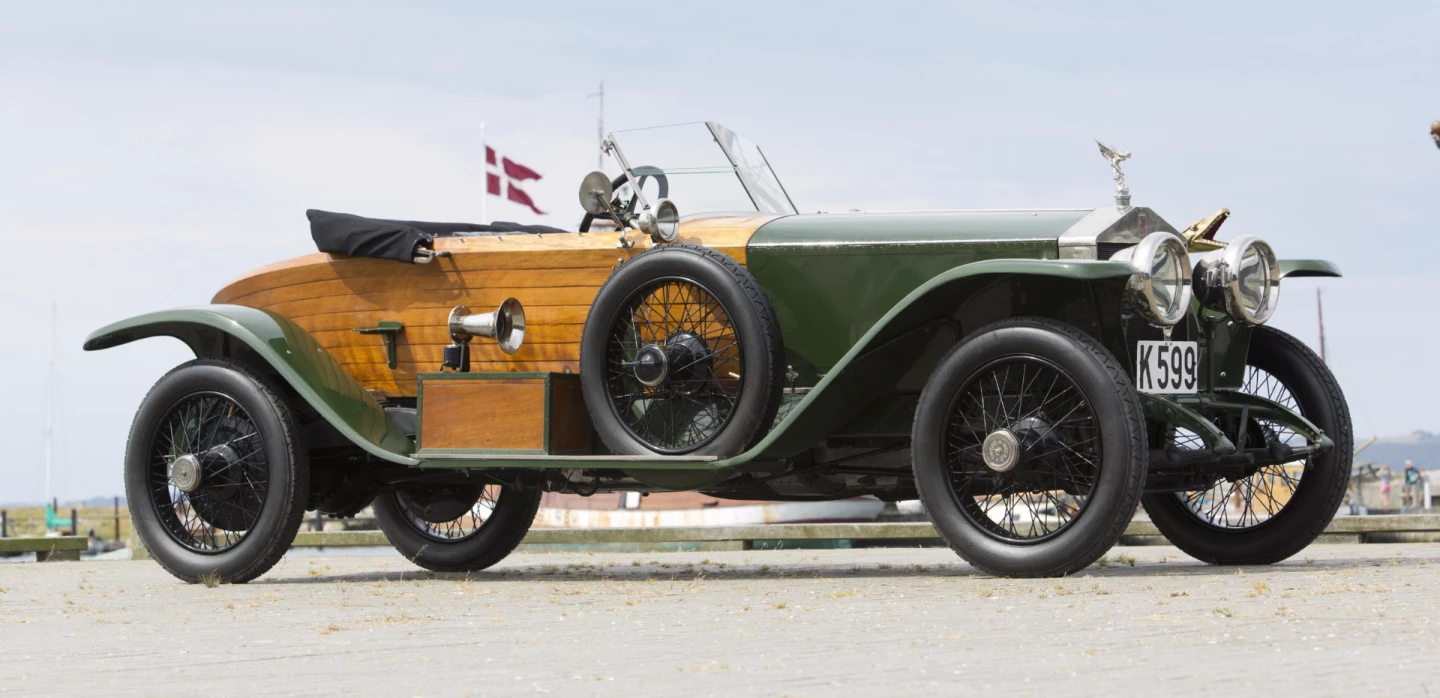
Sold for DKK7,475,000 ($1,121,749)
The name "Silver Ghost" was not one bestowed on this car by Rolls-Royce but by the media, and the company did not begin officially using the Silver Ghost name until 1925, though all 40/50 models have been retrospectively dubbed with that name. Similarly, the original claim that Rolls-Royce produced "the best car in the world" was also made by the media, specifically the highly influential British car magazine Autocar in 1907, when it was writing about the 40/50 (this model). Given such praise, it's not surprising that the 40/50 enjoyed the longest production run of any model in the company's history.
This particular Silver Ghost was first tested by the factory on 29 April 1914 and subsequently delivered to Rolls-Royce France with coachwork by an unknown builder. It then passed to Garage Majestic in Brussels, and appears to have received its current skiff body by Berlin coachbuilder Schapiro-Schebera somewhere between 1919 and 1923. Though skiff-style bodywork was not entirely uncommon a century ago, this car is believed to be the only remaining Silver Ghost with a wooden skiff body.
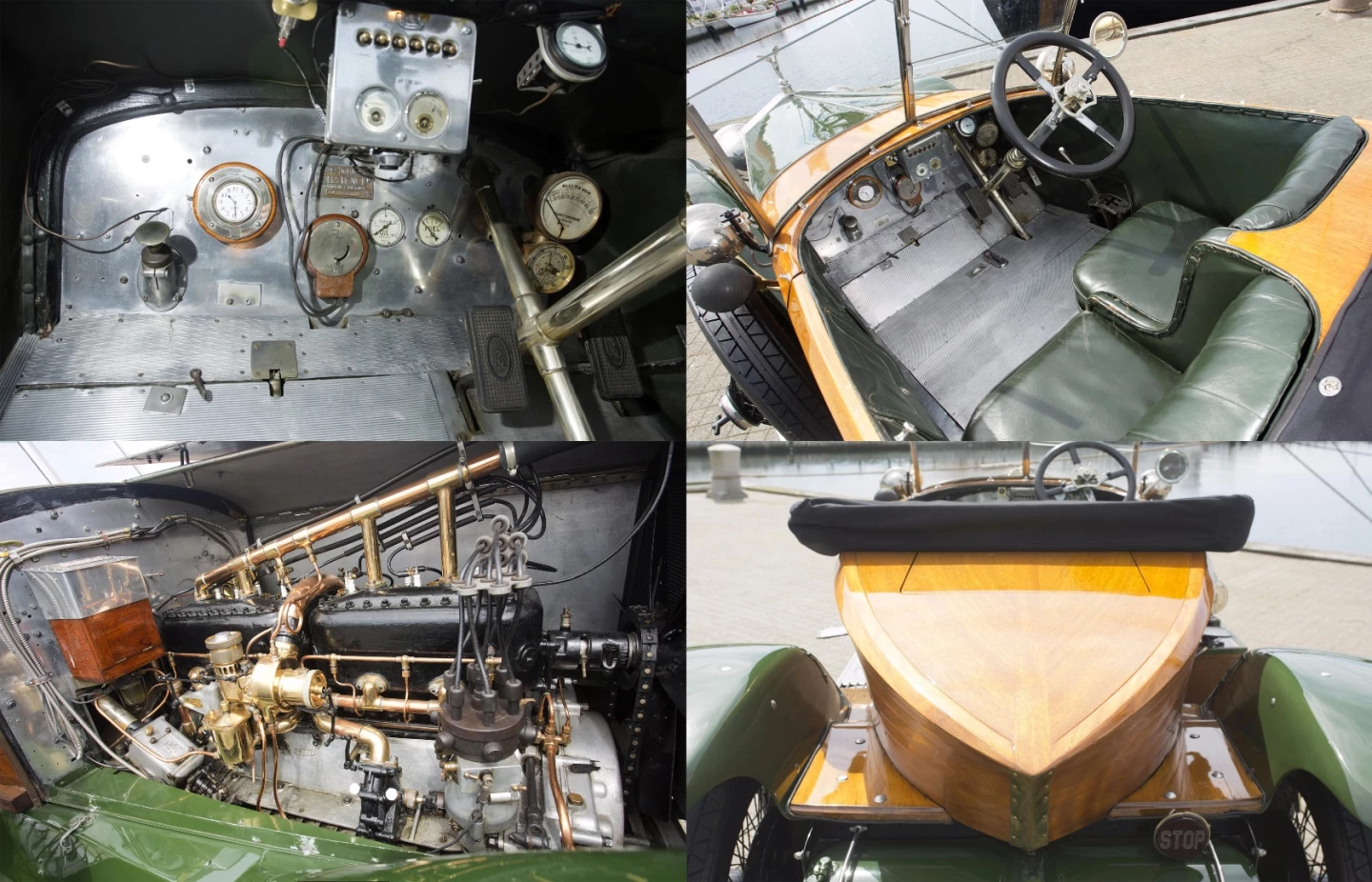
Being the best car in the world a century ago, it's interesting to take a close look at what was state-of-the-art at the time. At top left in the above image, the instrumentation was extensive, but top right shows its location, which meant that you had to peer down through the steering wheel to between your feet to read any of the guages, inluding the speedometer, just to see how fast you were going. At bottom left is a close-up of the exquisite detail of the 7,428 cc L-Head Inline six cylinder engine which produced 50 horsepower. The metallurgy of the day dictated quite modest engine speeds one hundred years ago, and maximum power was achieved at just 1,500 rpm.

Some of the detail work on the car is fascinating. Above is the gear-shift mechanism for the four-speed gearbox, which was mounted to the right of the steering wheel, while the image at right shows a close up of the floor-mounted speedometer and odometer made by Elliot Brothers of London.
Bonhams' web site offers the ability to examine these pics in high definition, and with this particular car, it's worth a visit to see the detailed imagery.
1937 Maybach SW-38 Special Roadster
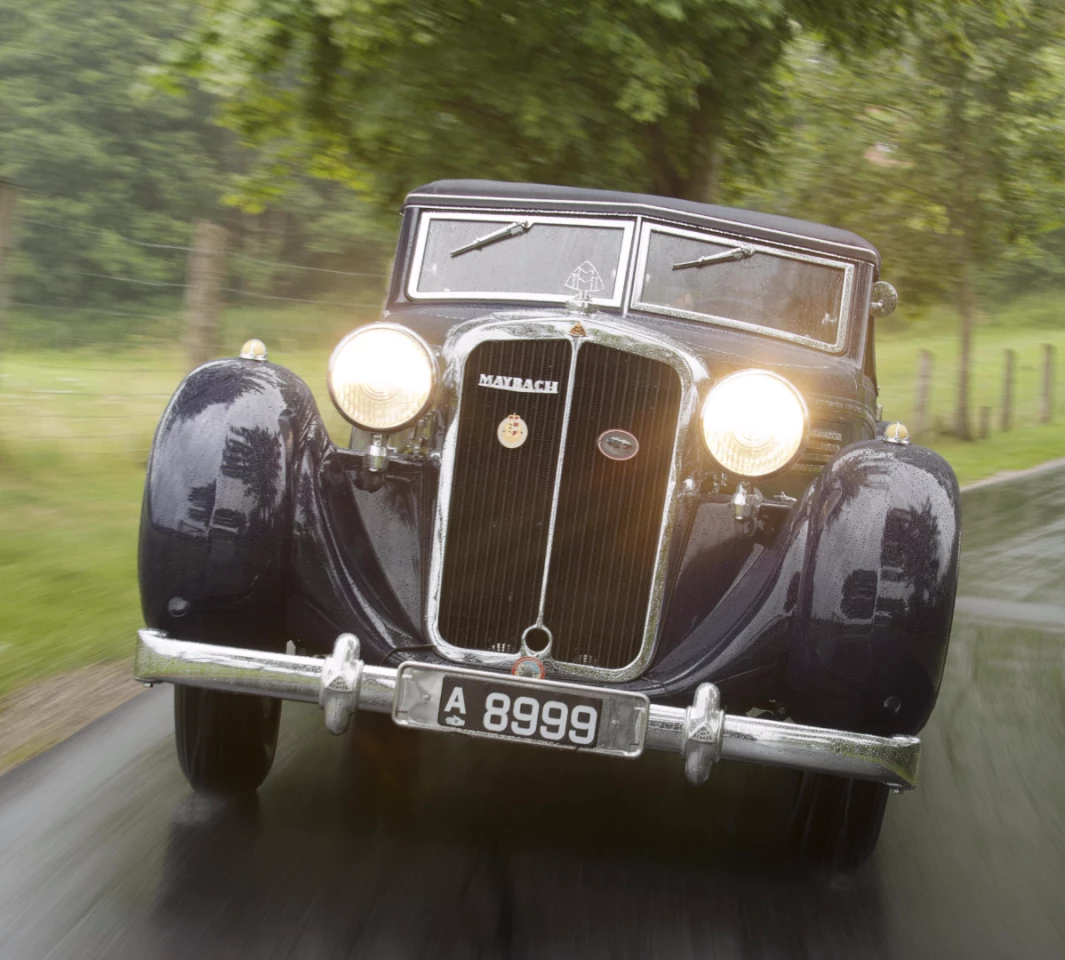
Sold for DKK7,475,000 ($1,121,749)
One of the great German marques of the pre-WW2 era, Maybach emanated from the pioneering engineering genius Wilhelm Maybach who worked with Gottlieb Daimler in developing the internal combustion engine to viability.
Maybach is best known for the massive V-12 engined DS-7 and DS-8 models of the early 1930s but those cars were incredibly expensive and the smaller type SW-38 was introduced in 1936 to cater for a broader though still very exclusive clientele. This model was available in three straight-six engine capacities (3.5, 3.8 and 4.2 liter) and was, as the auction catalogue description states, "an engineering tour-de-force."
This car was discovered in Hungary some years ago by the well-known German classic car dealer Eberhard Thiesen. The chassis was originally fitted with Pullman Limousine type coachwork and it was decided to construct the current body based on period Spohn drawings. The mechanicals and the chassis were restored as correctly as possible and a correct engine type is fitted, although according to Mr. Thiesen, it may possibly not be the original engine first installed in the chassis. The work was performed over a period of years by UAB Motorai in Vilnius, Lithuania under the close supervision of Mr. Thiesen. Everything about this car speaks of the craftsmanship and attention to detail that was par for the course during its construction. In period, the Special Roadster was the most sporting bodywork available on the most sporting Maybach chassis.
1927 Bentley 6½ Liter "Bob-Tail"
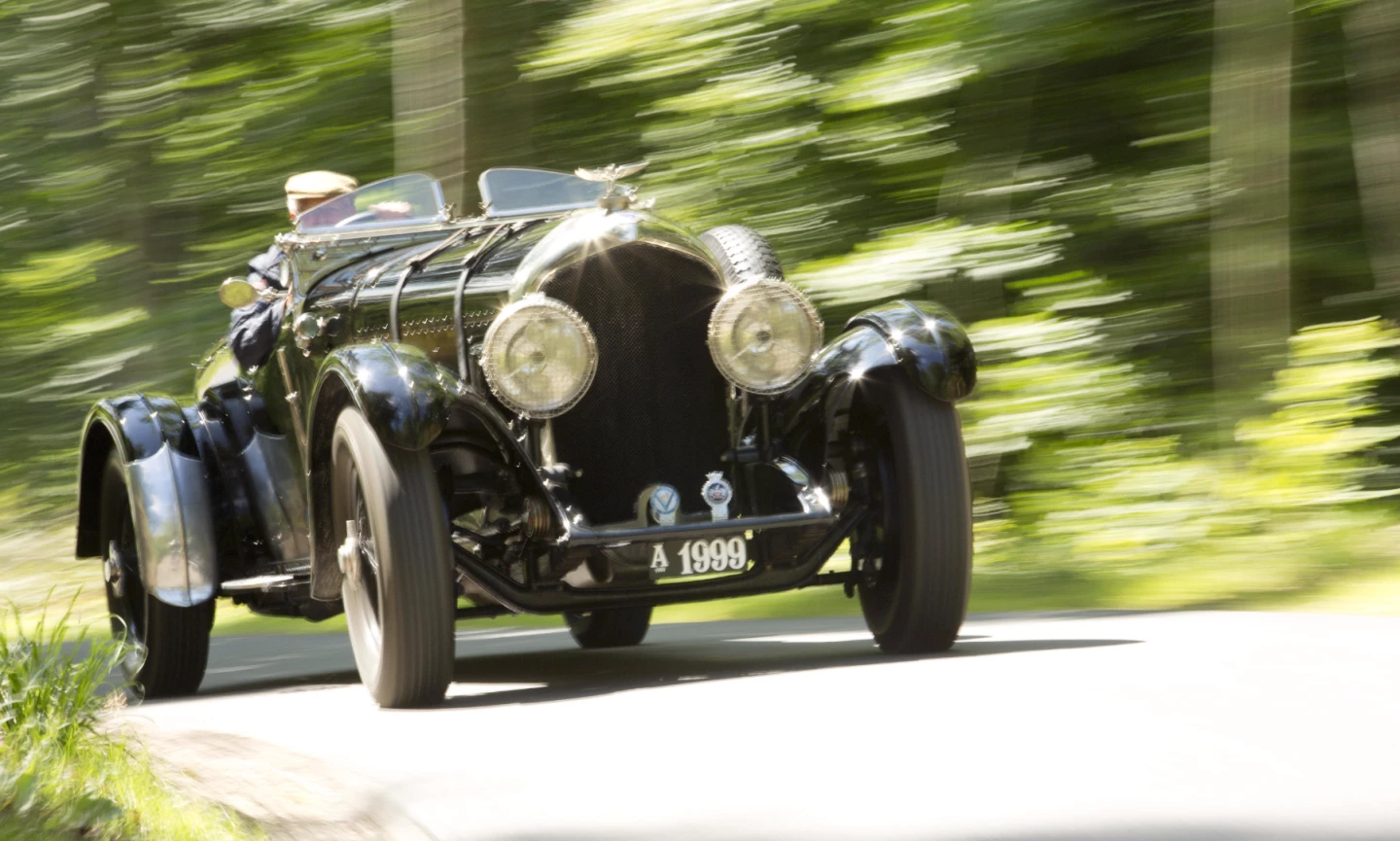
Sold for DKK7,187,500 ($1,078,605)
The sixth and final car from the Frederiksen Collection to pass the million dollar mark, this 1927 Bentley 6½ Liter "Bob-Tail" is one of just 20 built on the short wheelbase 11 ft chassis. A wonderful tale worth reading, this car has travelled far and wide and been remarkably well researched.
1939 Lagonda LG6 Rapide Drophead Coupe
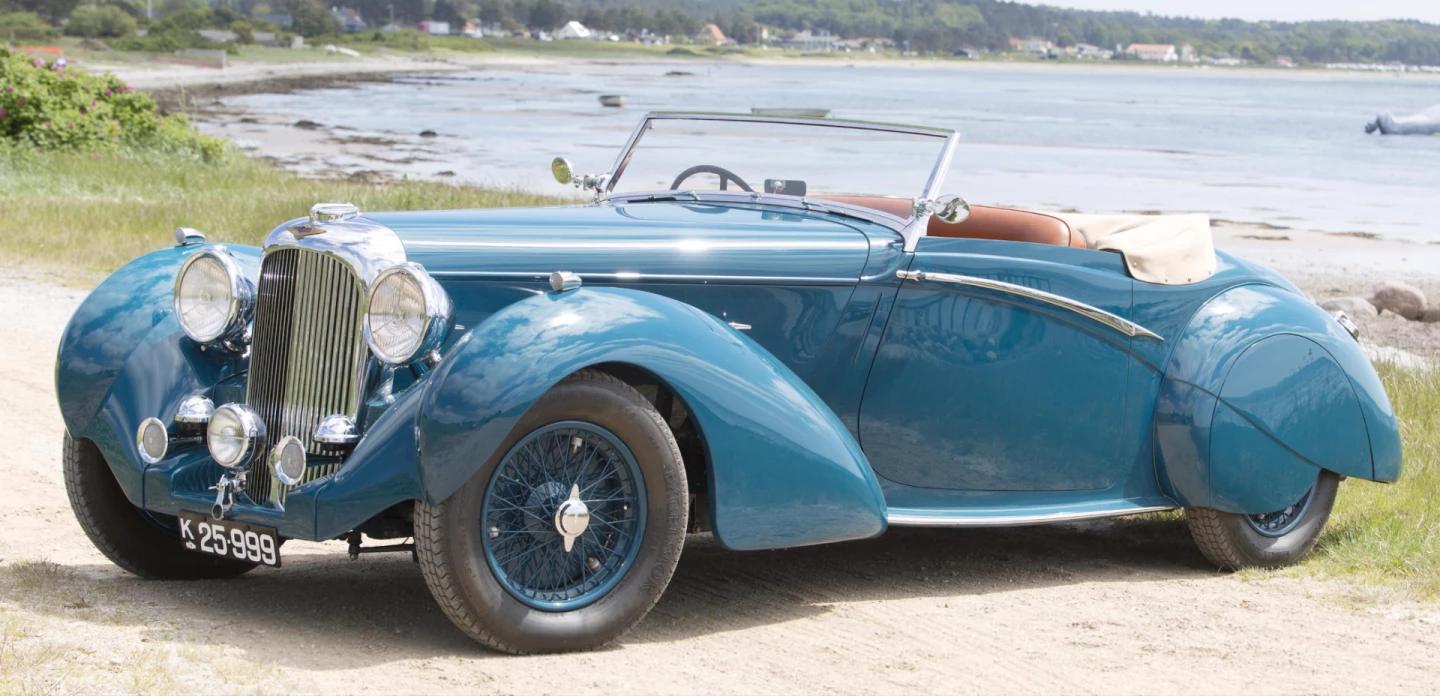
Sold for DKK5,462,500 ($819,740)
This car was the centerpiece of the Lagonda stand at the 1940 New York Auto Show. It is one of only six LWB LG6 Rapides built, fully restored in 2007, and was a double-trophy winner at the 2008 Pebble Beach Concours d'Elegance. As the auction catalogue states, this LG6 Rapide Drophead Coupe is "a superb example of a very rare motor car." Not surprisingly, the Lagonda smashed its pre-sale estimate of DKK 3,400,000 to 4,200,000, and the final price of DKK5,462,500 ($819,740) was a new world record for the marque.
1933 Rolls-Royce Phantom II Continental Owen Sedanca Coupe

Sold for DKK5,175,000 ($776,596)
In terms of stories, this car has a trump card, being the car raced against the Blue Train from Calais to Antibes by London Socialite Mrs. Peta Fisher (pics and newspaper cuttings at this link). In addition, this rare and elegant car is one of only 12 Phantom II Continental Owen Sedanca Coupes built and was sold with an extensive history file including Rolls-Royce factory records. See the auction description for more details.
1912 Rolls-Royce 40/50 Silver Ghost Cabriolet

Sold for DKK4,772,500 ($716,194)
Another 40/50 Silver Ghost originally delivered new as a Barker cabriolet with a long and travelled history that at one stage saw the bare chassis and motor used as a farm vehicle in South Australia before the body was recreated and the car restored to its former glory, going on to a "Best of Show" win at Technoclassica in Essen, Germany.
1910 Rolls-Royce 40/50 Silver Ghost "Balloon Car"
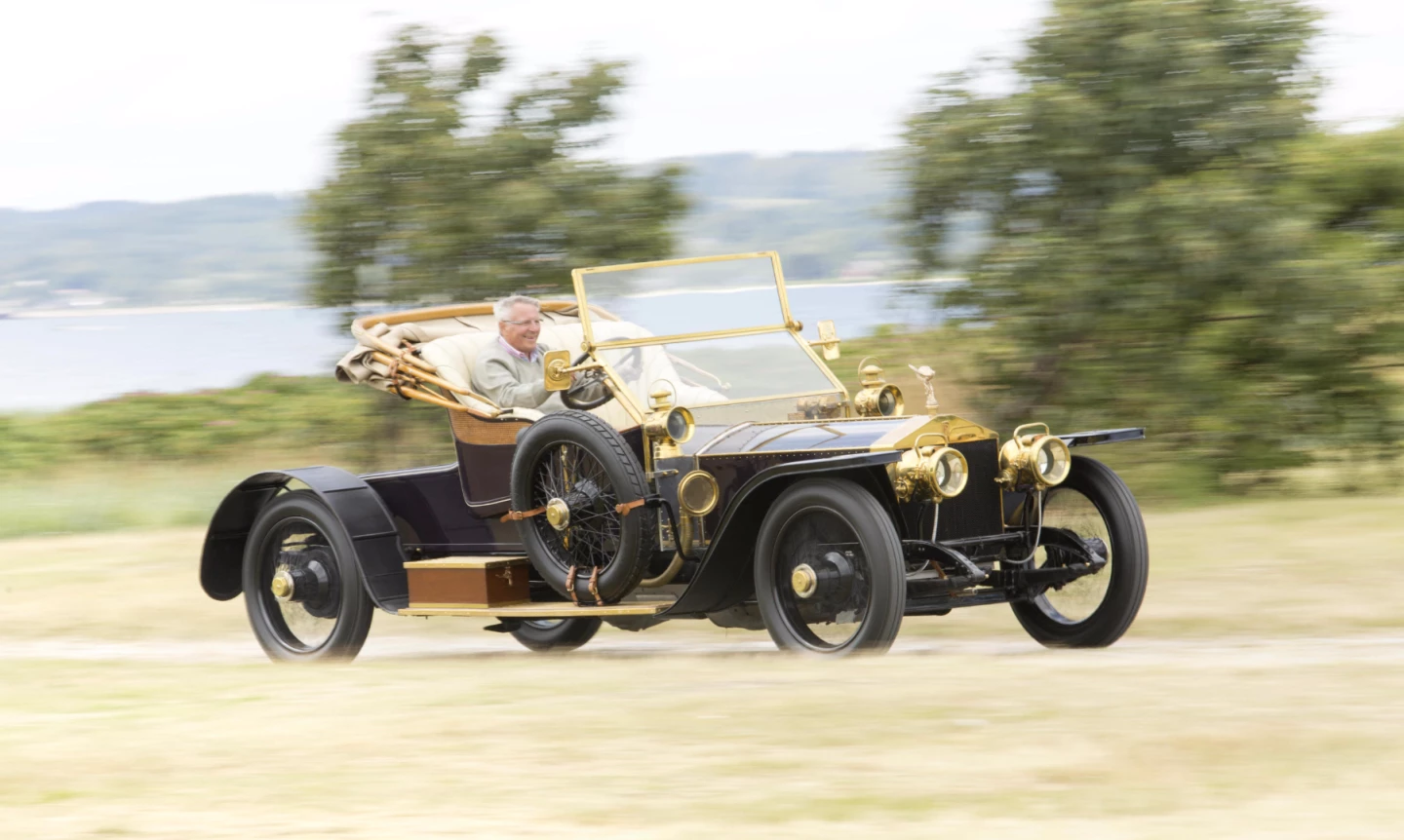
Sold for DKK4,312,500 ($647,163)
Charles Stewart Rolls perished pursuing his other love, which was flying. As early as 1906, Rolls participated in a balloon race in Massachusetts and he grew increasingly passionate about his new sport, becoming an early airplane pilot in the process. He made more than 130 balloon flights before his death in a Wright Brothers aeroplane at a flying exhibition in July 1910.
In 1908, Rolls had coachbuilder H.J. Mulliner create a very special body that was conceived as a Roadster with a cape top and a long platform behind the seats, where Rolls' balloon basket could be loaded at the conclusion of each flight. The soft and flexible rear fenders were made of patent leather, so that there would be no damage when the balloon basket was loaded and unloaded. This bespoke purpose-built vehicle became known as the Balloon Car.
This car was fitted with a Barker Landaulette body when new but has since been rebuilt as a faithful recreation of the fabled but long lost Charles Rolls Balloon Car. An exquisite car which has previously been part of the Richard Solove Collection, the Millard Newman Collection and the Prestley Blake Collection, the history of the car is as enchanting as the car itself.
1937 Rolls-Royce Phantom III Drophead Coupe
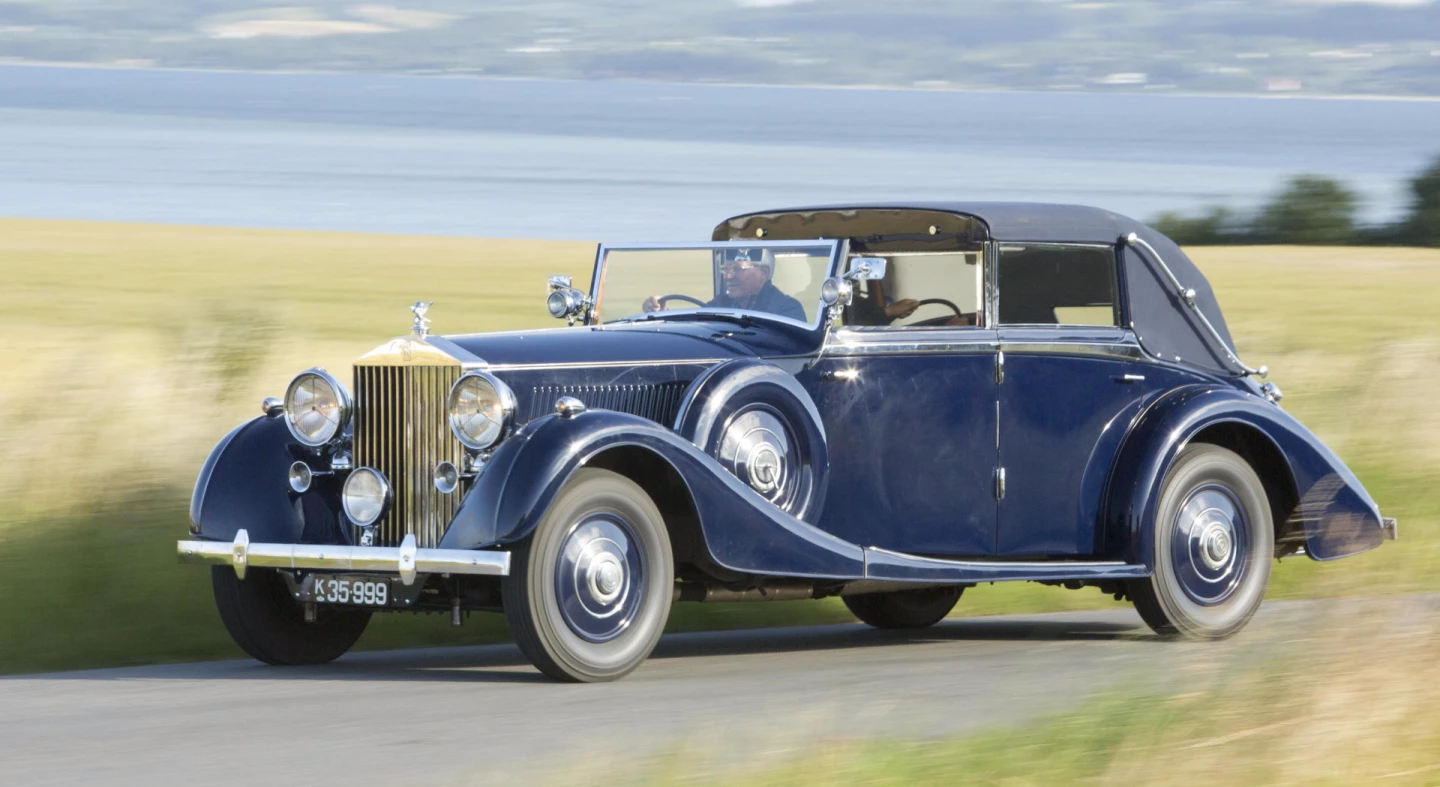
Sold for DKK4,140,000 ($621,277)
Another storied automobile with a fascinating provenance, this 1937 Rolls-Royce Phantom III Drophead Coupe was formerly owned by both prominent industrialist and leading fascist Friedrich Mandl and subsequently by his ex-wife, one of the world's most accomplished sex symbols in Hedy Lamarr. Mandl was chairman of a leading Austrian armaments company, and both Benito Mussolini and Adolf Hitler attended their parties. He subsequently moved to Argentina where he served as an advisor to Juan Perón.
Prior to meeting Mandl, Lamarr was already an established actor and controversially appeared nude in the 1933 film Ecstacy (with a plot line that became quite prophetic for her life) and once married, the controlling Mandl attempted to curtail her acting career in addition of attempting to buy up all the copies of the infamous film, with his domineering nature eventually causing her to flee to Paris disguised as a maid. There she met MGM head Louis B. Mayer, who offered her a movie contract in Hollywood and she went on to become one of the world's sex symbols in a career spanning three decades, appearing in in the lead female role opposite male leads of the calibre of Charles Boyer, Spencer Tracy, Clark Gable, James Stewart, Robert Young, and Victor Mature.

Not content with mere superstardom, Lamarr became bored with the low level demands of her acting career, and embarked on a part-time career as an inventor. In World War II, she focussed her attentions on defeating the jamming of radio communications and working with composer George Antheil, she developed spread spectrum and frequency hopping technology which was adopted (post war) by the US Navy. The principles of her work are now incorporated into modern Wi-Fi, CDMA and Bluetooth technology, and led to her being inducted into the National Inventors Hall of Fame in 2014. Quite some gal!
Lamarr's 1937 Rolls-Royce Phantom III Drophead Coupe is equally as elegant as it's former owner with it's Vanden Plas Coachwork and after a ten year restoration project it went on to become a Pebble Beach Concours d'Elegance and CCCA Award winner. The car was hammered down to a Danish bidder in the room.
1913 Rolls-Royce 40/50 Silver Ghost Tourer
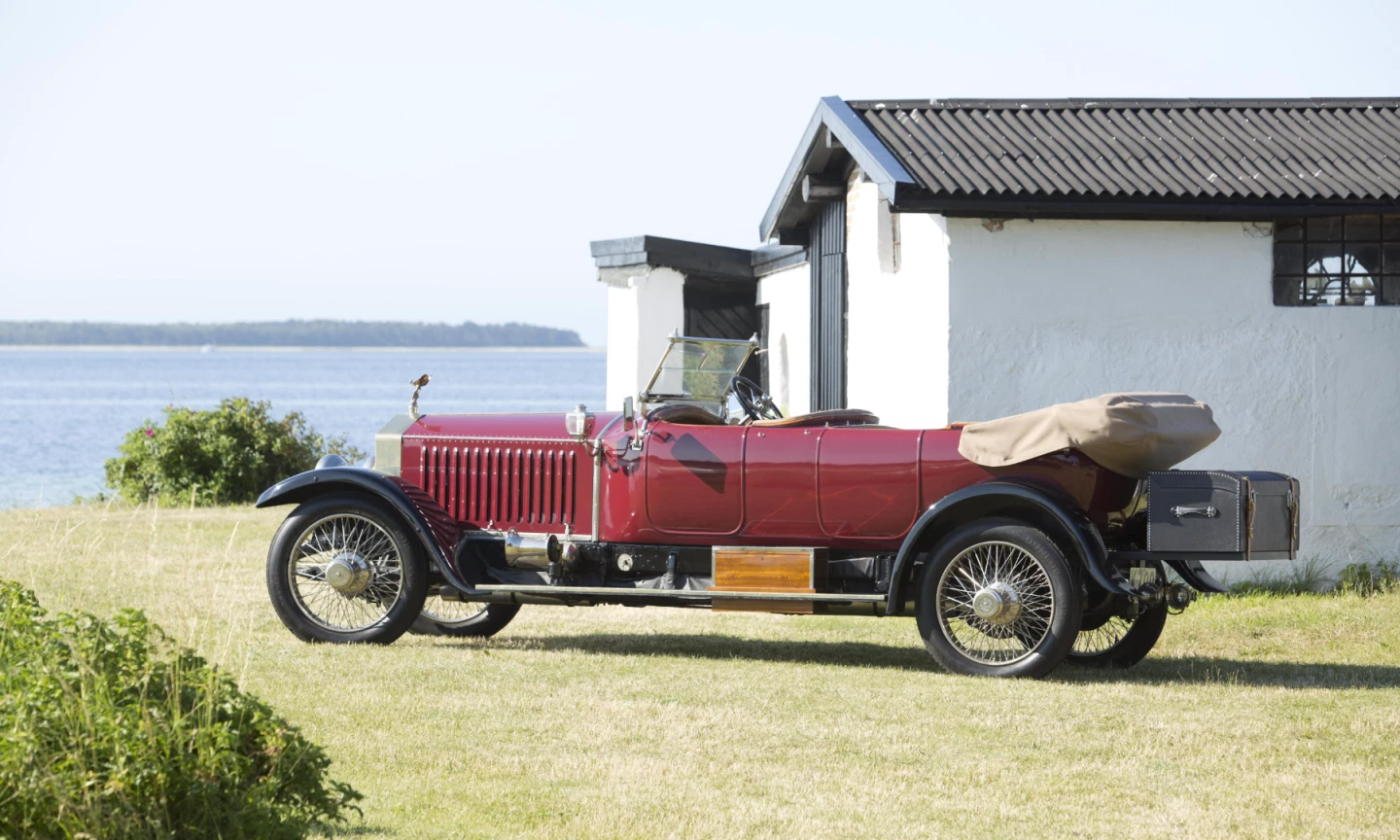
Sold for DKK3,910,000 ($586,761)
This 1913 Rolls-Royce Silver Ghost was delivered on 8 December 1913 to the Maharaja of Patiala. At just 22 years-of-age, it was already his sixth Rolls-Royce and he went on to purchase a further 20 cars from the company. Like other Indian Maharajas, he enjoyed almost limitless wealth and he specified his cars in accordance with his lavish tastes. This car had nickel-plated brightwork and wheels, and a London-to-Edinburgh style dashboard and bonnet. He was also the first man in India to own an aircraft, in the first decade of the twentieth century, and he constructed his own airstrip for the task.
The car remained in India until discovered in 1970 by the famous British dealer and astute automobile sleuth, Charles Howard. Howard found a complete and original car, but its condition had deteriorated due to the ravages of time and weather as it had been left on an open porch for 20 years in Calcutta. Howard purchased the car and undertook a lengthy and extensive restoration before passing into the collector world, spending time in the custody of famous American Rolls-Royce collector Richard J. Solove.
1933 Stutz DV-32 Roadster
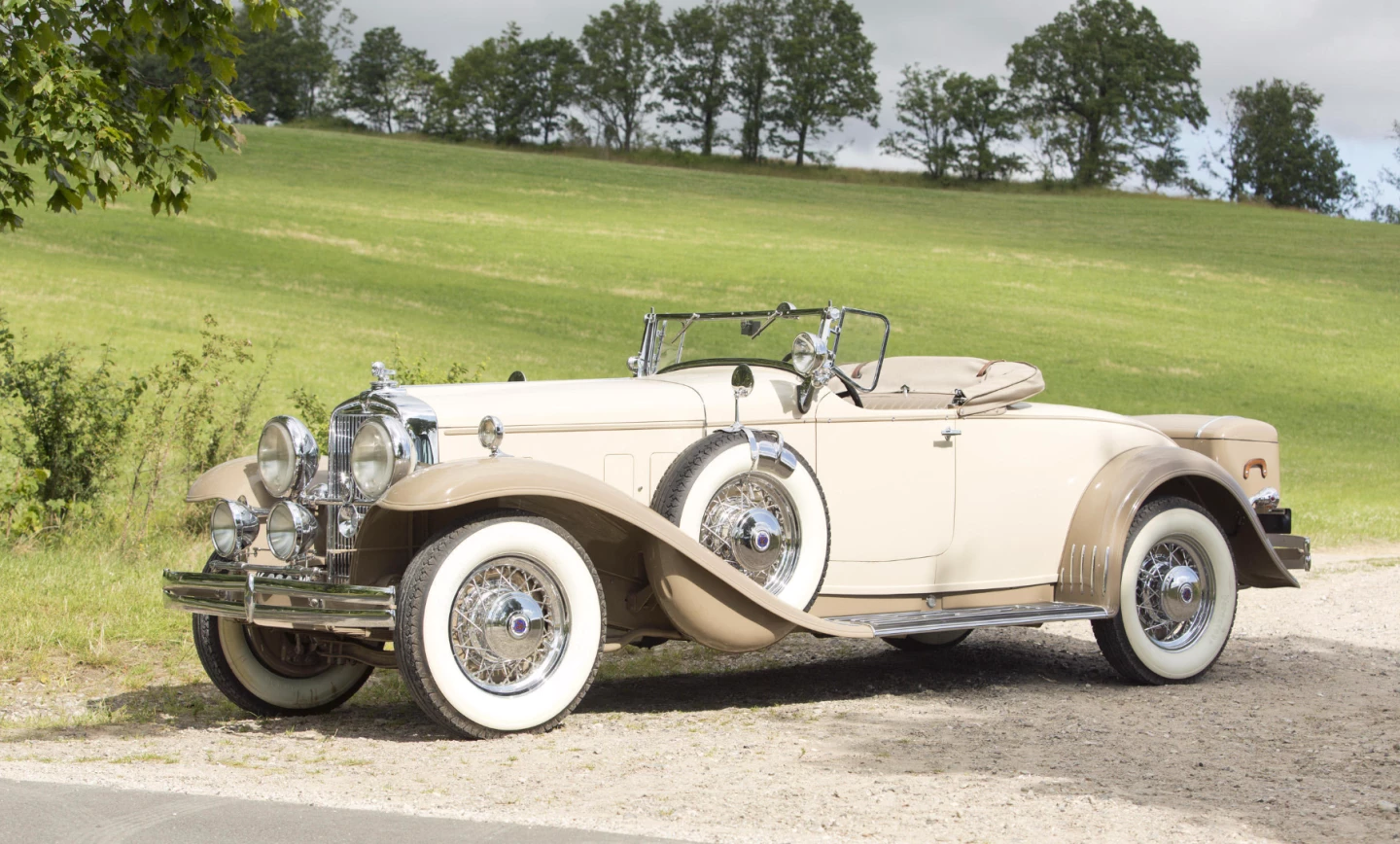
Sold for DKK3,795,000 ($569,503)
This 1933 Stutz DV-32 Roadster with coachwork by LeBaron is a rare (being one of just two DV-32 LeBaron Roadsters built in 1933) and unmolested example of the model featuring the 160 hp, DOHC, four-valve, cross-flow, hemispherical combustion chamber straight eight. This car once belonged to Alexander Kennedy Miller, whose story is definitely worth reading. After living frugally for decades, when Miller fell from a ladder and died at the age of 87 in October 1993, his 81-acre estate was found to contain 35 Stutz cars, $800,000 of gold bars and coins in the woodpile, $200,000 of silver coins in the crawl space under the building, $700,000 in promissory notes and $200,000 of stocks and bonds. Miller had never paid social security or income taxes, and claims were brought against the estate totaling $7.3 million by the IRS and $900,000 by the State of Vermont. To help pay off the debts, Christie's held one of the first historic barnfind auctions in 1996. This car was purchased at that auction and subsequently restored by Steve Babinsky, going on to subsequently win many prestigious concours events.
1973 Rolls-Royce Phantom VI Cabriolet
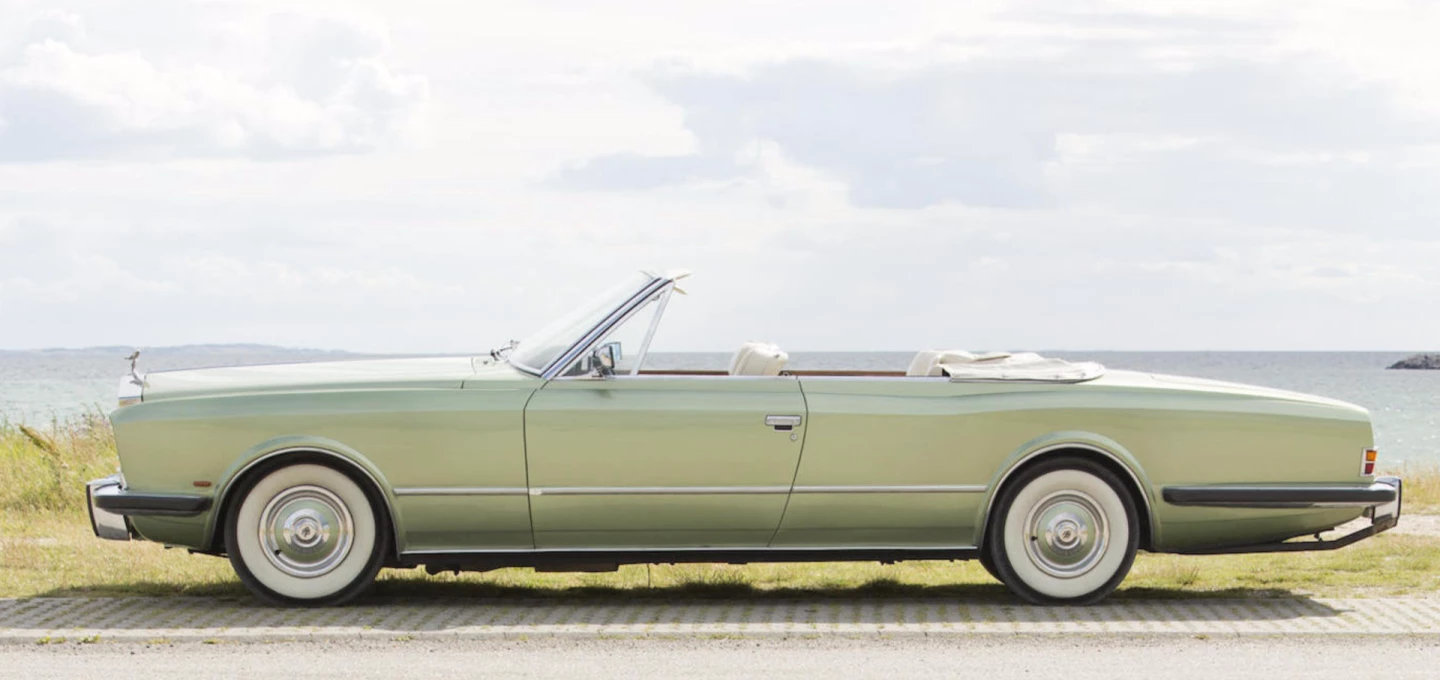
Sold for DKK3,680,000 ($552,246)
The Phantom VI was an ultra-exclusive sedan of which only 374 were produced between 1968 and 1990. Though it was the last separate-chassis Rolls-Royce model produced, only six of the Phantom VI produced received bodies that were not created by Mulliner Park Ward. Four chassis-engine assemblies were supplied to the funeral trade and two chassis were bodied by famous Maserati designer Pietro Frua.
This car is one of those two cars, the other becoming a four-door cabriolet that was finished by Royle after Pietro Frua died and went into the Blackhawk Collection. Accordingly, this vehicle is unique in many ways, being built on a gargantuan chassis designed for limousines (Queen Elizabeth's official 'State Car' was a Phantom VI with an identical chassis and motor to this car), and apart from being a one-off, it is also one of the largest two-door convertibles ever built. It was created by special order for H.E. Consul Simon van Kempen of Switzerland and Monaco, who drove it extensively until 1997 who sold it to British car collector Walter Steinemann and then to it's third owner, Henrik Frederiksen. One of the most visually arresting automobiles you can imagine, partially due to its design and partially due to its sheer magnitude.
1937 Mercedes-Benz 320n Cabriolet A
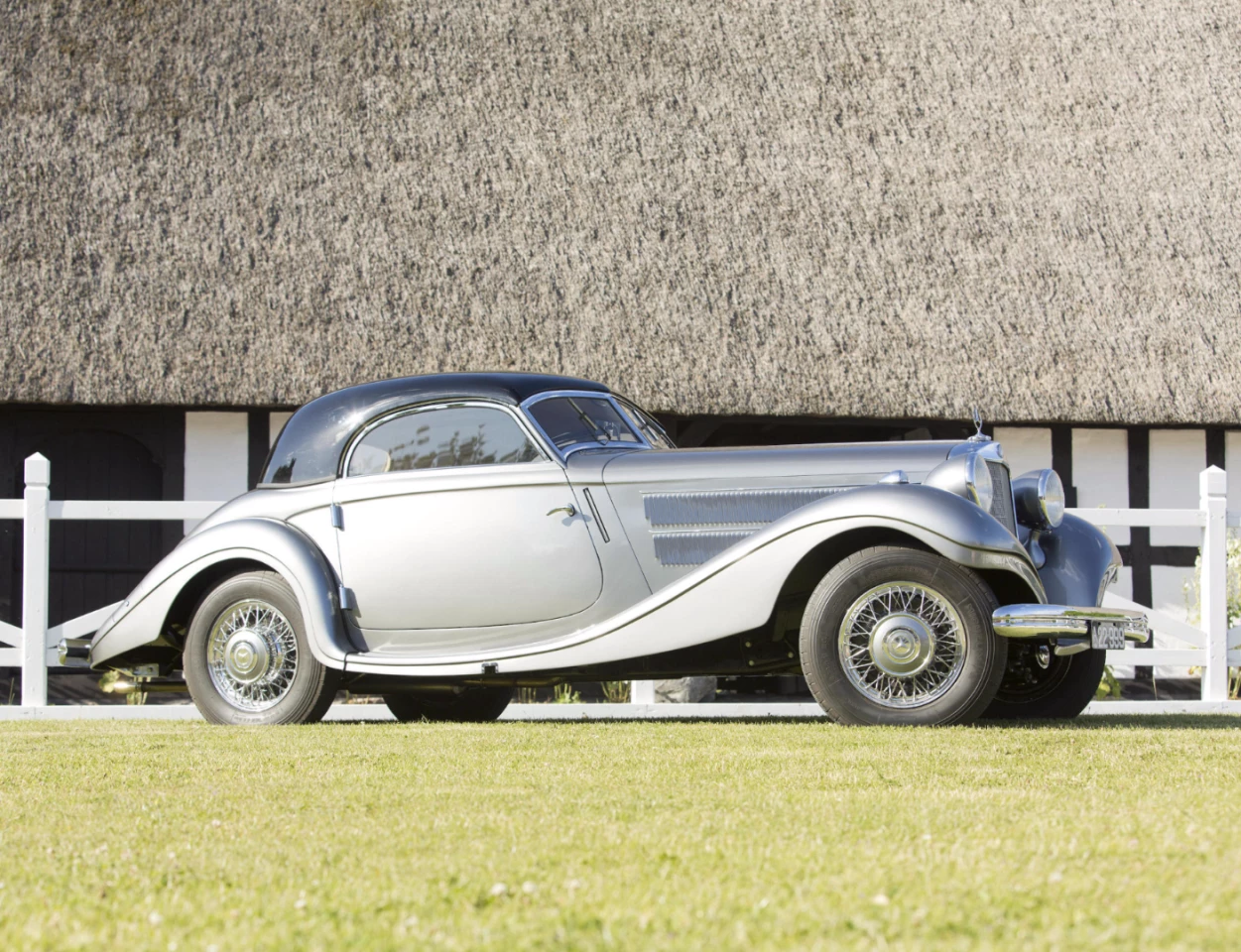
Sold for DKK3,622,500 ($543,617)
The baby brother to the Mercedes-Benz 500K/540K, the 1937 Mercedes-Benz 320n Cabriolet A featured a 3.2 liter six cylinder engine producing 78bhp and giving it a top speed of 80 mph (130 km/h), when equipped with the optional ZF overdrive transmission.Though still an expensive sports car in period, the Cabriolet A was not in the same price league as the 500K/540K in cost. Indeed, the 320 of the 1930s occupied the same place in the model hierarchy that the E-Class does today. The Cabriolet A has a non-conventional three-seat layout with two front seats and a third seat set at 90 degrees across the rear, with the spare wheel on the boot. This particular car was discovered in Russia 15 years ago and restored in Lithuania. It was also sold with a hard top, a rare factory option for this era of motor car.
1937 Horch 853 Sport Cabriolet
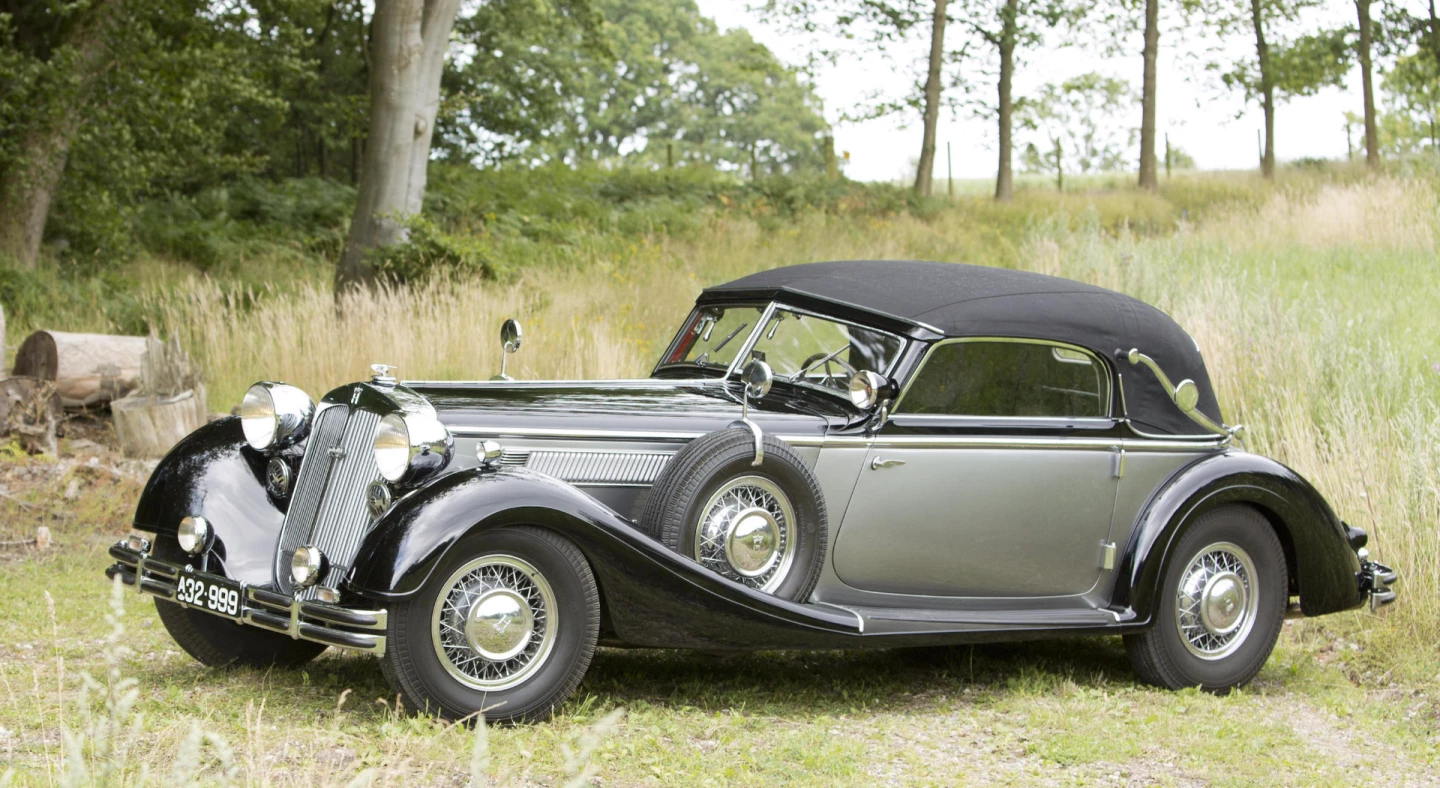
Sold for DKK3,507,500 ($526,359)
August Horch was one of the pioneers of the German automobile industry, founding Horch, Audi and later serving on the board of Auto Union which saw his companies amalgamated once more - Audi's four ring logo represents the four brands amalgamated in 1932, being Audi, Horch, Wanderer and DKW. The 4.9-liter Type 853 was launched in 1936 with a SOHC straight eight engine driving through a 4-speed overdrive gearbox and the braking was superlative thanks to servo-assisted hydraulic brakes. A stylish and fast Sports Cabriolet with a 140 km/h top speed, the 853 ceased production at the outbreak of World War II, with only 950 cars built.
This early 100 hp 853 was discovered by well-known German classic car dealer Eberhard Thiesen in Russia in the early 1990s and subsequently restored with what is believed to be its original Sports Cabriolet body.
1929 Isotta Fraschini Tipo 8a Landaulette
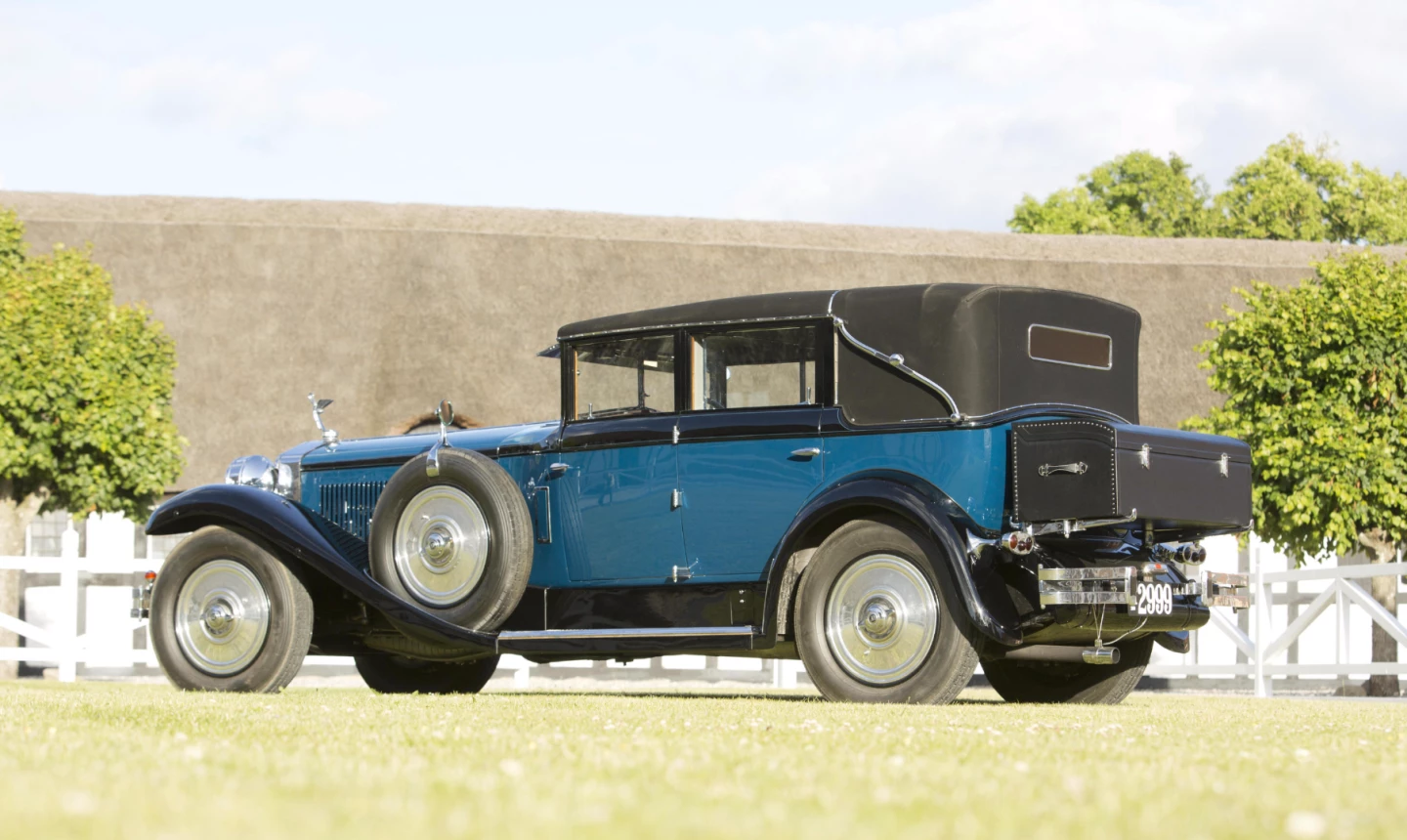
Sold for DKK3,507,500 ($526,359)
In the 1920s, Italy's Isotta Fraschini enjoyed a global reputation for producing luxury automobiles that was at least the equal of England's Rolls-Royce and the Spanish Hispano Suiza marques, thanks at least partially to the performance of the company's aircraft engines during WW1, where they were the favorites of both pilots and maintenance crews for their power and reliability. This 1929 Isotta Fraschini Tipo 8a Landaulette with coachwork by the renowned Milanese company Castagna, won the 1957 Pebble Beach Concours, fell into a neglected state and was then restored to its full glory once more. As the auction description states: "This imposing Landaulet is guaranteed invitations and acceptance to the world's most prestigious motoring events and the best-manicured lawns of the finest Concours d'Élégance shows."
1938 Jaguar SS100 3½ Litre Roadster

Sold for DKK3,335,000 ($500,473)
We now know this company as Jaguar, but at the time of this car's manufacture, the company name was SS and the model name was Jaguar. SS originally stood for the Swallow Sidecar & Coachbuilding Company, which branched out into motor manufacture in 1926, and the SS100 was the first high-performance model produced by SS Cars Limited, powered by a new Weslake-developed overhead-valve engine in a shortened SS1 chassis. SS Cars felt that the introduction of the overhead valve unit justified the adoption of a new name for the series. As SS Cars boss William Lyons later recalled: "I immediately pounced on Jaguar as it had an exciting sound to me." In point of fact, "Jaguar" would be adopted as the marque name in 1943, "SS" having by then acquired a somewhat tarnished reputation.
This particular SS100 Jaguar is one of only 116 cars produced with the larger 3,485 cc OHV inline six cylinder engine, breathing through twin SU carburetors and producing 125 bhp at 4,500 rpm. The perfect car for prominent tours and rallies, it is the quintessential pre-war English Sports Car.
What if you held an auction and no-one came?
Webb's Classic Motorcycle Auction held last Sunday was a disappointment to say the least. With many pristine collectible motorcycles making up the numbers, including a brace of rare racing Bultacos, we expected the extremely favorable USD-NZD exchange rate to attract a legion of bidders from overseas, but the depressed state of the New Zealand economy saw less than 150 people attend and only six of the 34 lots sold, with all of the top 250 contenders passed in. Here's a sampling of what transpired:
1975 MV Agusta 750S
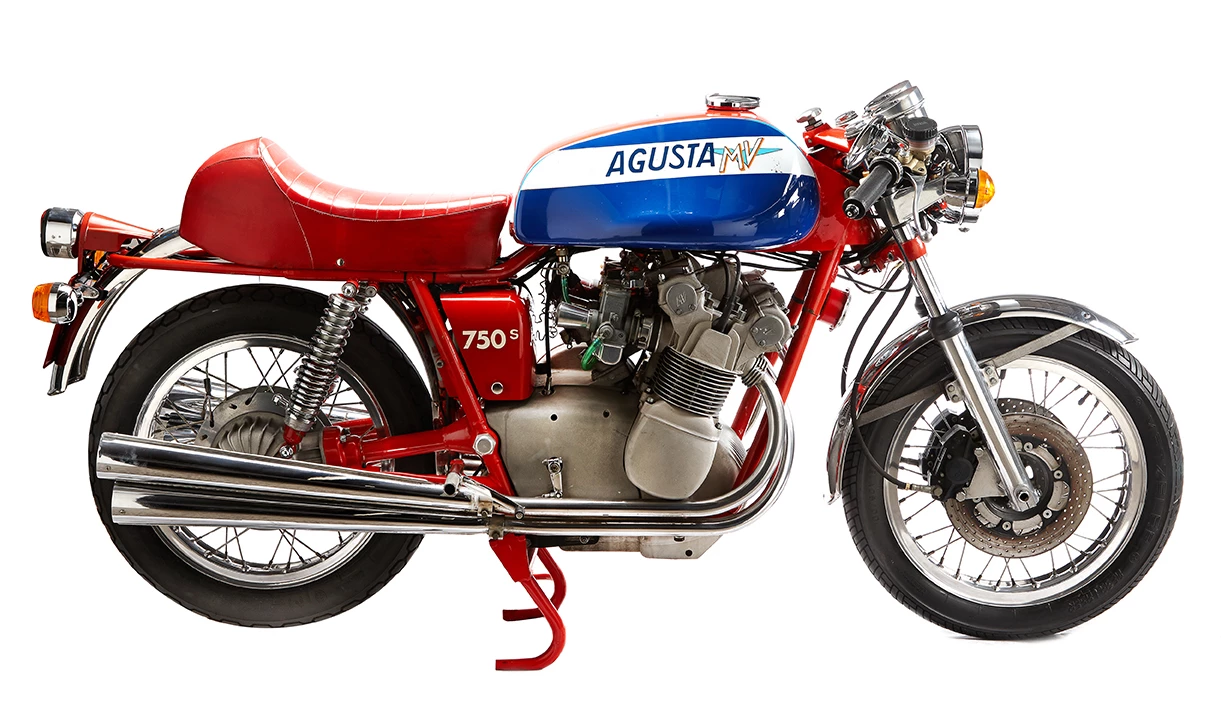
The Webb's MV Agusta 750 (Lot 24, engine number: 214-0589) looked in pretty good nick, with 37,266 km (23,156 miles) on the clock and it was estimated by the auctioneer to sell for NZ$90,000 to $100,000 (US$57,000 - $63,000). That's one of the reasons we felt there were bargains to be had.
The record price at auction for an MV Agusta 750S is $143,661 (£85,500) for a 1972 model set by Bonham’s at it’s Spring Stafford sale in April, 2014.
Other recent prices for the model include: $90,862 (€ 66,752) by Artcurial at the Paris Retromobile auction in 2014 for a 1976 Arturo Magni 750; $78,100 for a 1977 850 SS by Mecum MidAmerica at it’s Las Vegas auction in 2015; $65,726 (€57,500) for a 1978 MV Agusta F750 Replica (built by Magni and based on a 750S) by Bonhams in Paris in February, 2015; $75,981 (€56,840) for a 1973 750 Sport by Artcurial (also Paris) in February, 2013; and $78,183 (GBP£49,140) for a 1973 750S by RM Auctions at it’s October, 2011 London sale.
Even during and prior to the Global Financial Crisis, MV Agusta 750 Sports were commanding aristocratic prices: Bonhams sold a 1976 750S America in June, 2008 for $64,092 (£32,200); a 1993 861cc Magni for US$69,030 in May, 2008; a 1973 750S for US$66,690 at the same May 2008 auction as the previous bike; $75,536 (£37,800) for a 1977 750S America in April, 2007; and $68,941 (£34,500) for a 1977 750S America at the same auction as the previous bike.
On the day of the Auckland auction, this MV Agusta 750 attracted a high bid of NZ$55,000 (US$35,111), which is well less than half the going rate for the highly collectible model with a stellar name.
1979 Ducati 900SS NCR F1
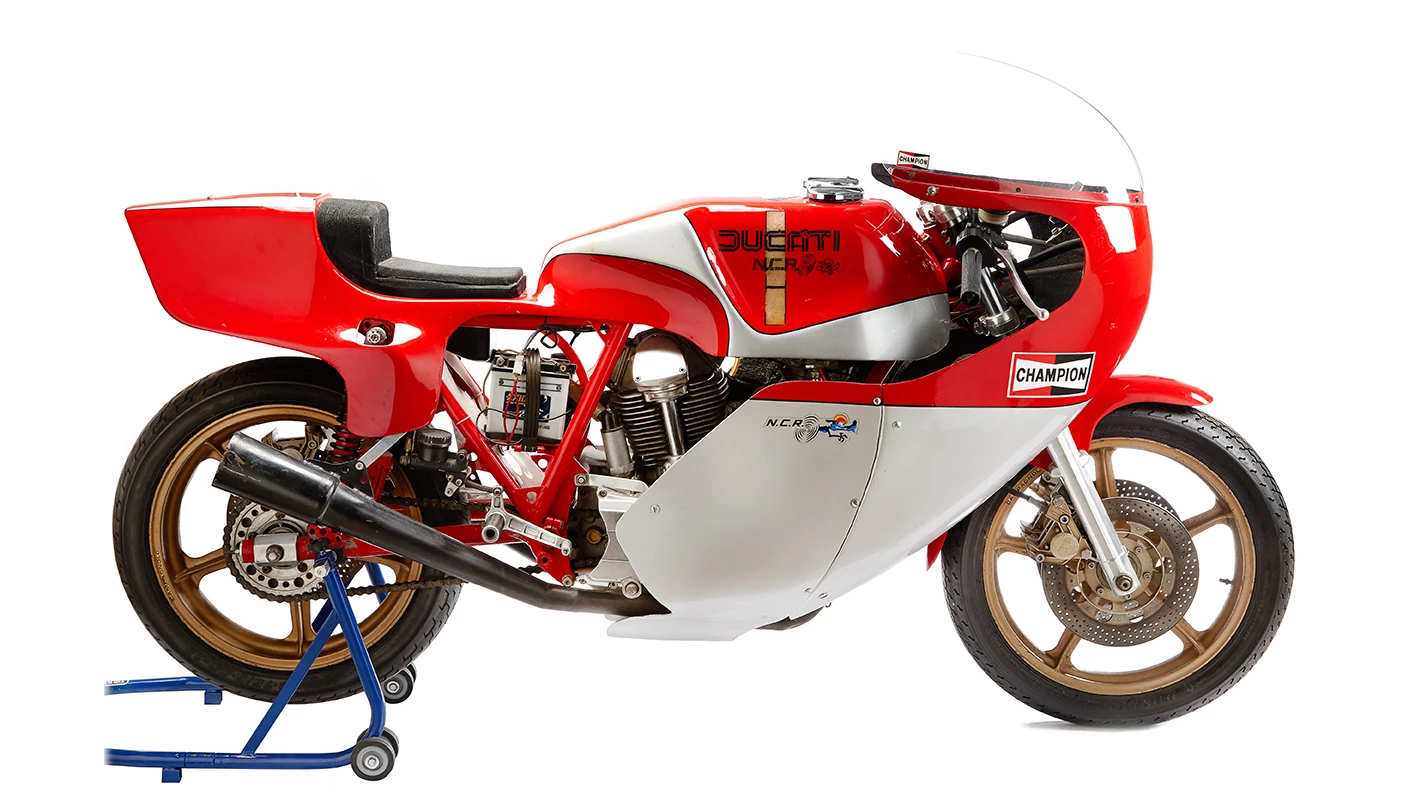
Ducati 900 NCRs are very rare, as they were made in very small numbers. Only five were made in 1979. The 900 NCR was very competitive on the racetrack, but owes much of it's fame to the legendary Mike Hailwood coming out of retirement at the geriatric (at least for racers) age of 37 and winning the Isle of Man TT at an average speed over 108 mph, setting a new lap record of 110.62 mph into the bargain. Posters of Hailwood on the distinctive NCR adorned workshop and "man cave" walls the world over and it was one of two wins (the other being the 750SS win at the 1972 Imola 200) that put the Italian marque on the world map. Everyone loved "Mike the Bike" and his achievement made world news, helping to reinforce to the baby boomer generation that immortality was indeed possible.
The world record auction price for a Ducati 900 NCR is US$175,500 which was set by Bonhams at it's Las Vegas auction in January, 2014. The record price went to a bike that had no special racing provenance as it had never been raced.
There aren't many more precedents for this rare motorcycle at auction, with another of the five 1979 NCRs failing to meet reserve at Bonhams Spring Stafford Sale earlier this year. The bidding didn't fall far short of the reserve price by much though, and the bike was estimated to sell for between £80,000 and £120,000 (US$120,000 to $180,000)
The least we're aware that a genuine NCR has sold for at auction in recent times is a 1979 model which fetched US$52,650 during Bonham's Quail Lodge sale during Monterey Car Week in 2011, followed by a 1978 model which sold for US$69,000 at Bonhams' January Las Vegas sale in 2013.
Some other notable "no sales" for this model include a 1978 model which failed to reach reserve (estimated at £55,000 to £75,000 - US$88,000 to $120,000) in October, 2010, another 1978 model in October, 2008 (estimated at £150,000 to £200,000 - US$260,000 to $345,000) and yet another 1978 model failed to sell in Paris in February, 2014 (estimated at €48,000 to €72,000 - US$65,000 to $98,000).
At the Webb's auction last Sunday, Lot 20, a 1979 Ducati 900SS NCR F1, was estimated to sell for between NZ$85,000 and $110,000 (US$54,000 to $70,000) and was passed in after a high bid of NZ$30,000 (US$19,151).
1950 Vincent Black Shadow
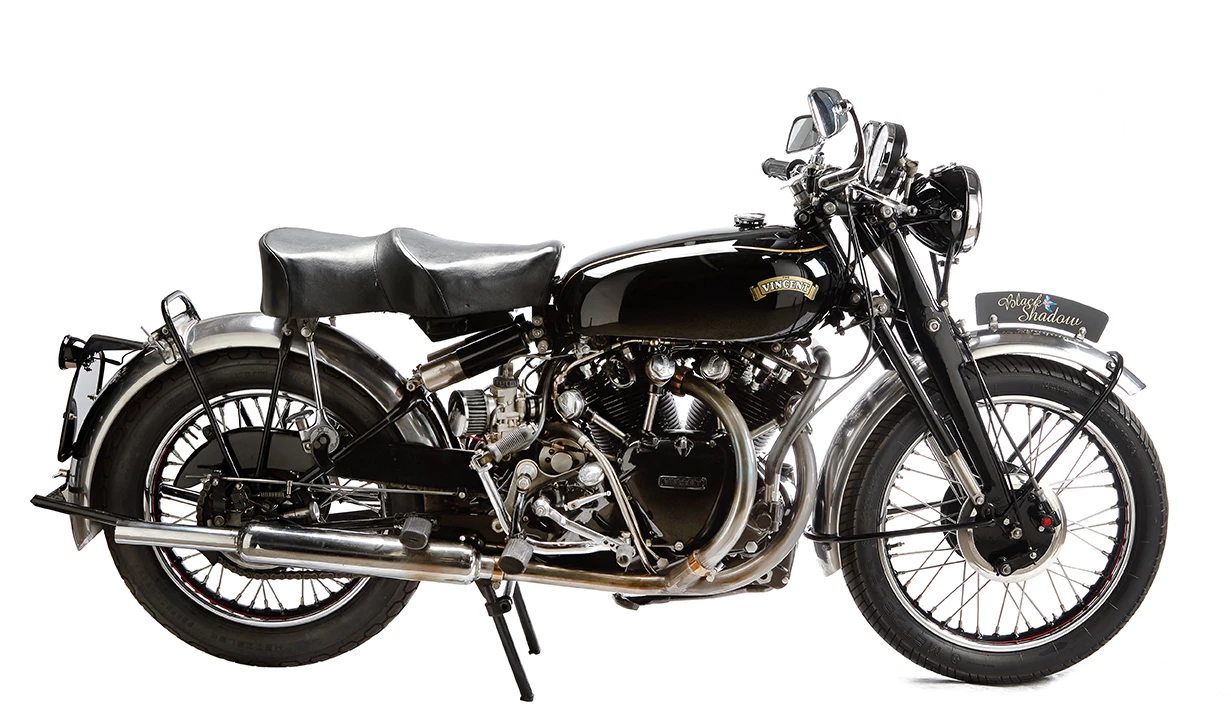
There are quite literally dozens of Vincents in the top 250 most expensive motorcycles ever sold at auction. Vincent is the second most popular marque in the top 100 motorcycles ever sold at auction and the most popular marque in the top 250 motorcycles sold at auction. Though there are many variants of the big Vincent 1000cc V-twin (White Shadow, Black Lightnings, Black Prince and Rapide), the most common specific Vincent model in the top 250 highest prices ever achieved by a motorcycle at auction is the Black Shadow.
The world record price at auction for a Black Shadow was set in April, 2012 at Bonham's Spring Stafford Sale by a 1955 model which fetched £124,700 ($202,824). The second highest price achieved by a Black Shadow was a 1952 model at $175,698 (GBP£113,500) in April, 2013, and the third highest price was a 1954 model by Mecum MidAmerica which fetched $156,600 during Monterey Car in August, 2013. There are dozens more Black Shadows which you can find at our listing of the top 250 motorcycles sold at auction. To make the top 250, a motorcycle has to have sold for more than US$90,000.
At the Webb's auction on 27 September, 2015, Lot 26 was a 1950 Vincent Black Shadow estimated to sell for between NZ$90,000 and $110,000 (US$57,000 to $70,000). The bike failed to sell after a high bid of NZ$60,000 (US$38,303), a lot less than half of the going rate.
We spoke with Webb's in preparation for this article, and if you are interested in purchasing one of the bikes listed in the catalogue for the sale, ring them on (64) 9524 6804 or email auctions@webbs.co.nz and they will assist. The full auction descriptions can be accessed at the Webb's site and the illustration below offers an overview of the results on the day.
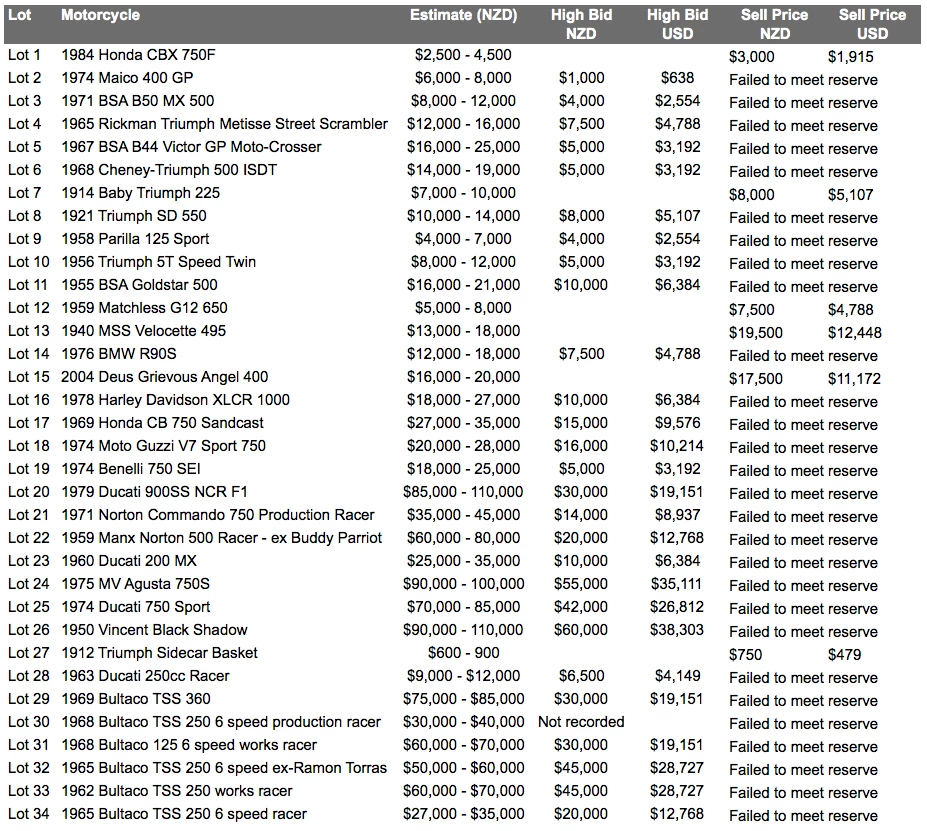
The moral of the story
We could go on with the history of the bikes on offer (we've already covered most of the key lots in this article entitled New Zealand motorcycle auction could start a second Gold Rush), but the moral of the story is that the quality of the motorcycles was first rate, yet the international audience which pays top prices for the best bikes was not engaged and could not participate to the degree demanded by top collectors.
Webb's will recover from the debacle, and ironically has a major upgrade to its internet presence under construction and due to launch in the first week of December, complete with internet bidding and video streaming of its auctions.
The world is moving forward at warp speed. Failing to keep up with competitors using the internet to assemble and engage an international audience has already seen many major companies in many industries disenfranchised, and fully internet-enabled auctions are now an imperative. It should be noted that the world is now moving beyond the desktop internet too, and it won't be long before a failure to provide an equally compelling mobile experience is also tantamount to commercial suicide because the competition is brutal and if a potential customer can't engage with you as he or she wishes, they WILL go elsewhere.
Heed the lesson!






















